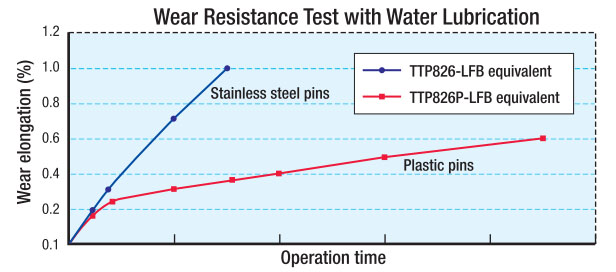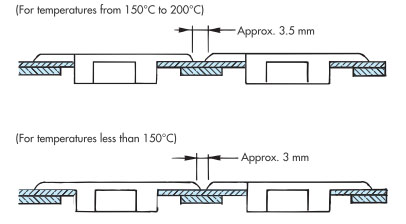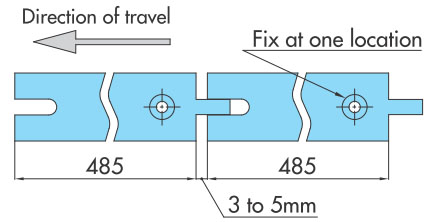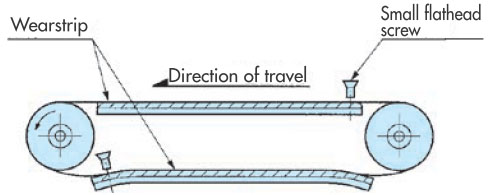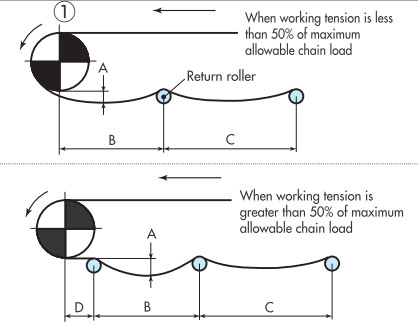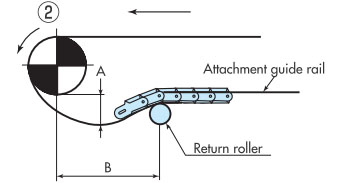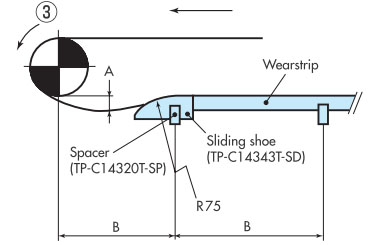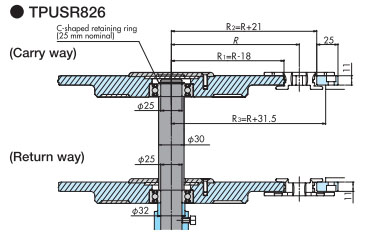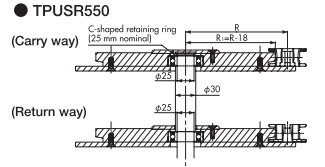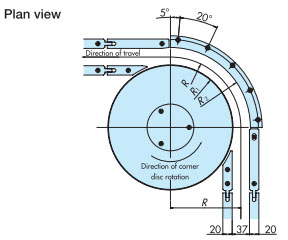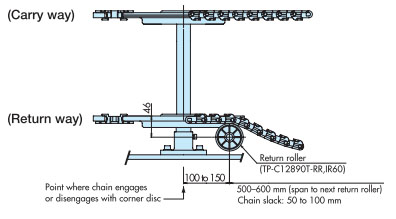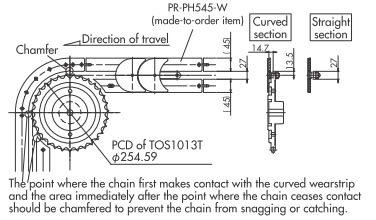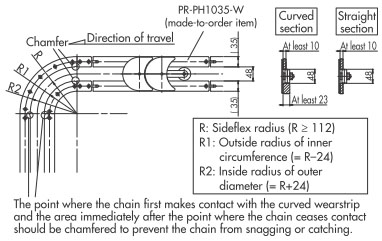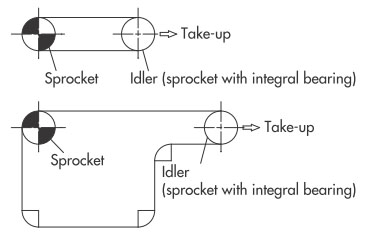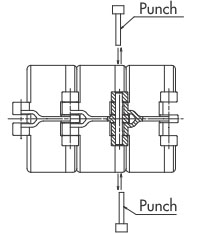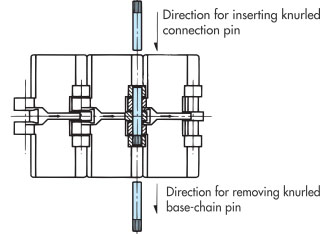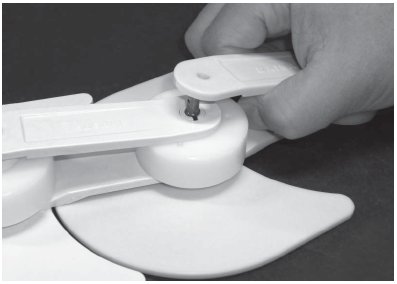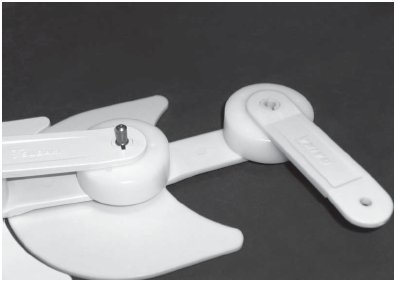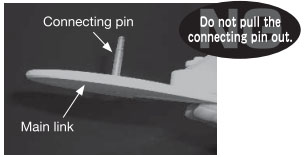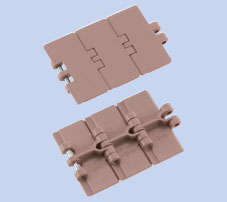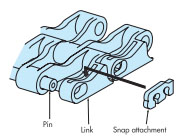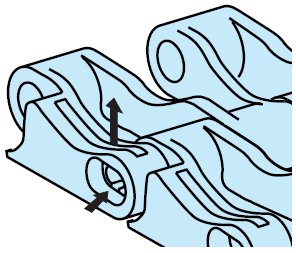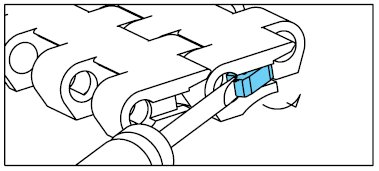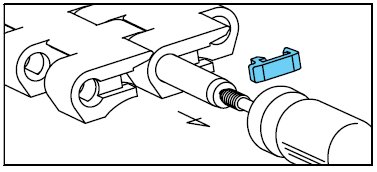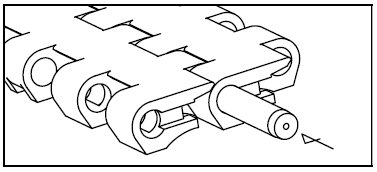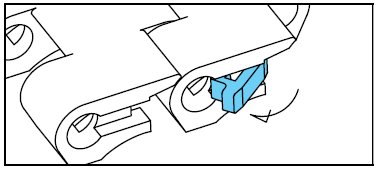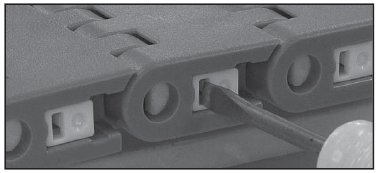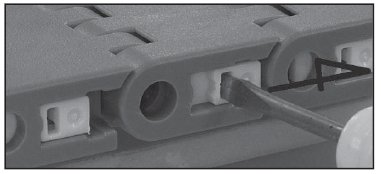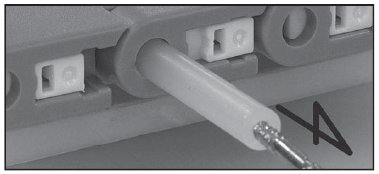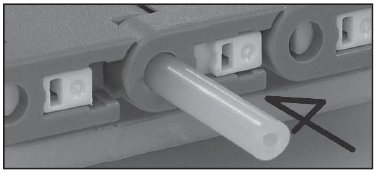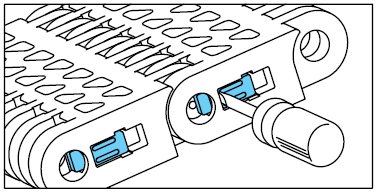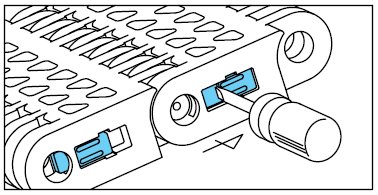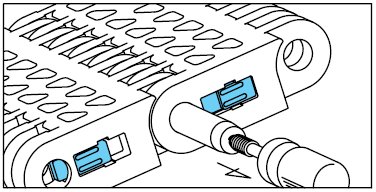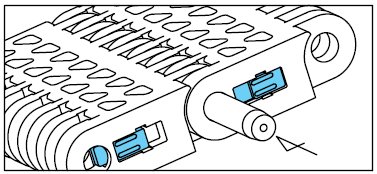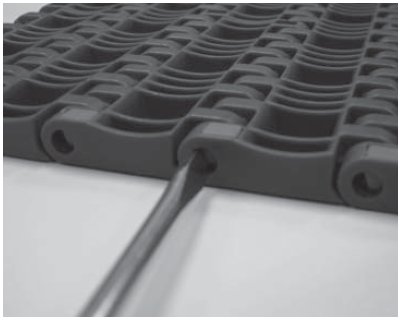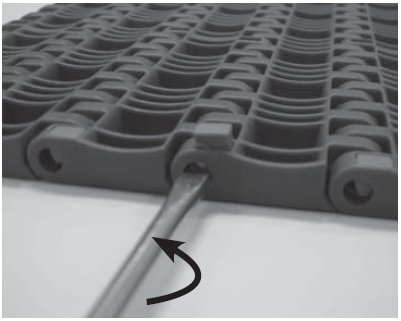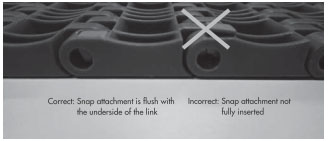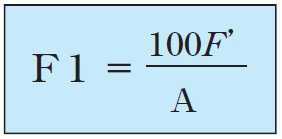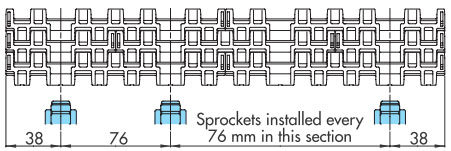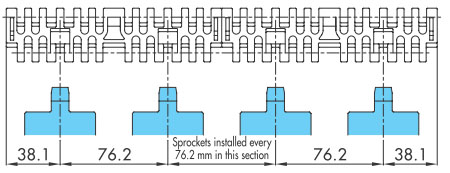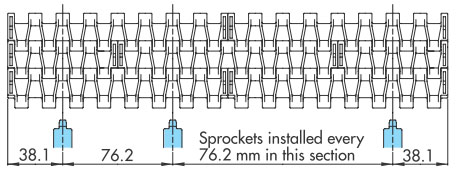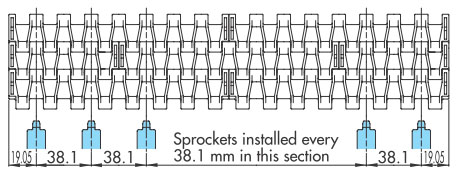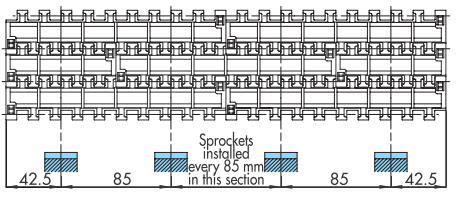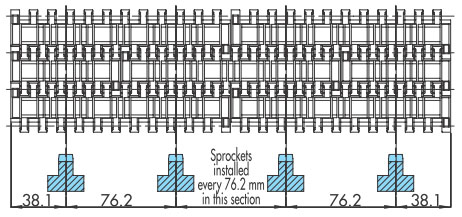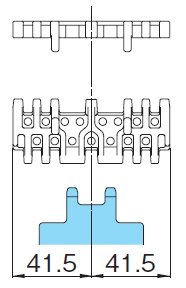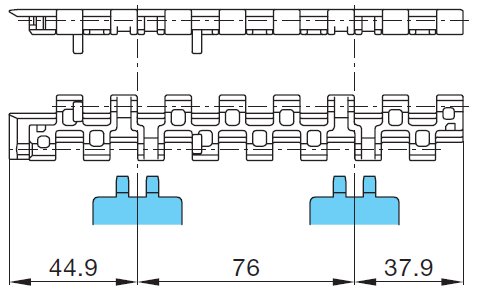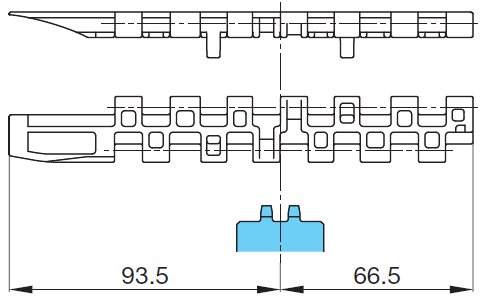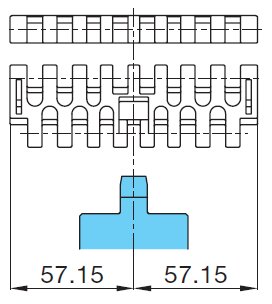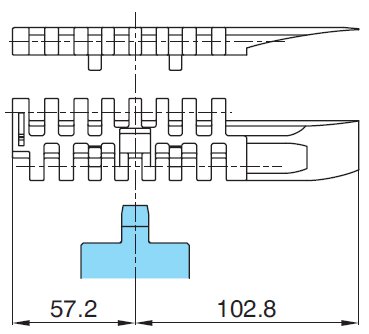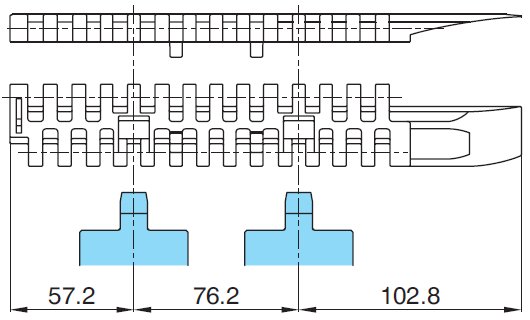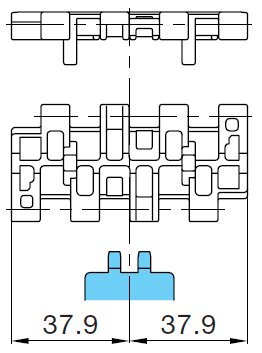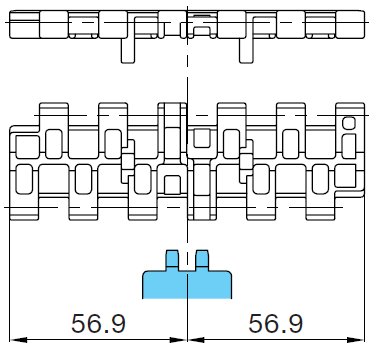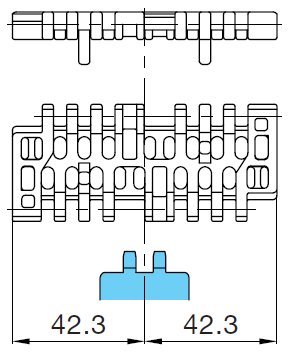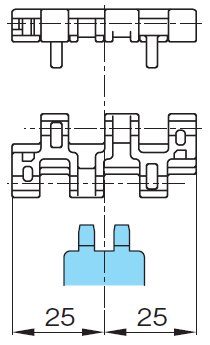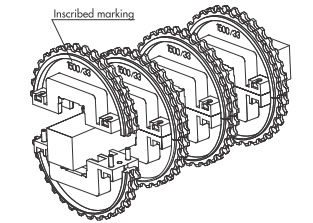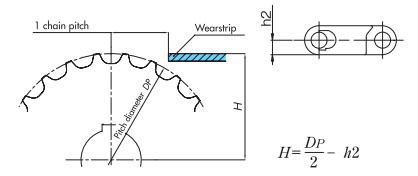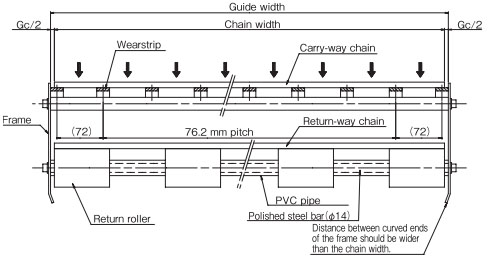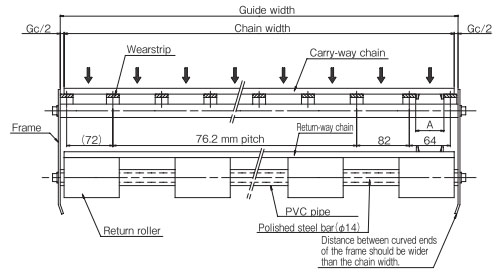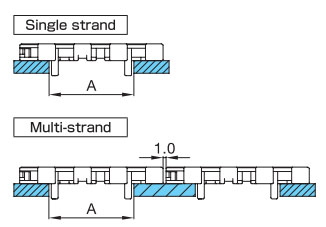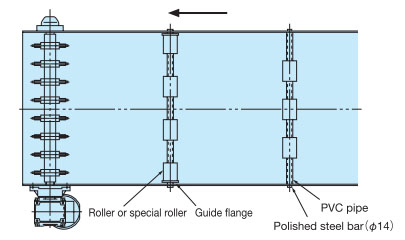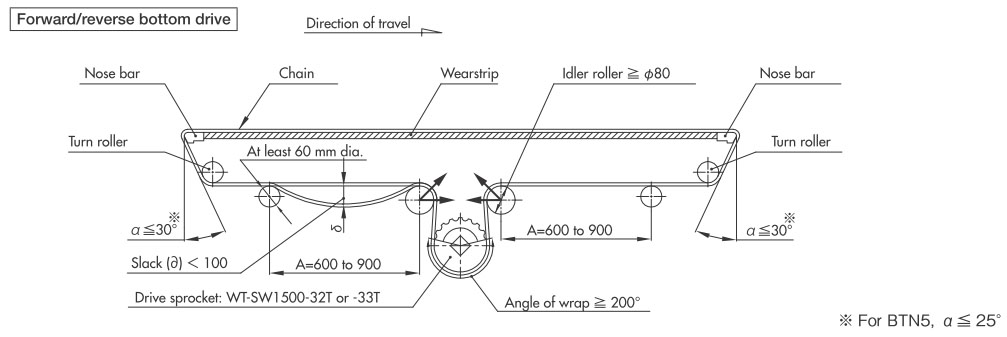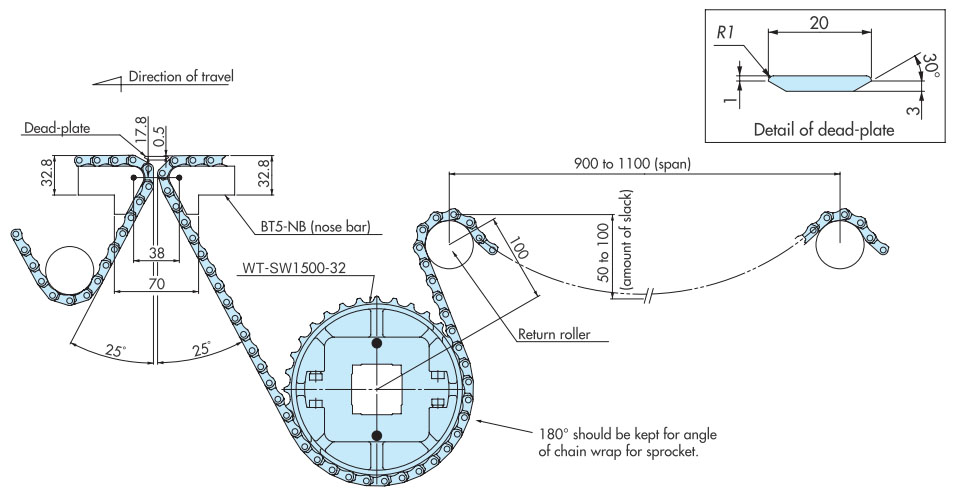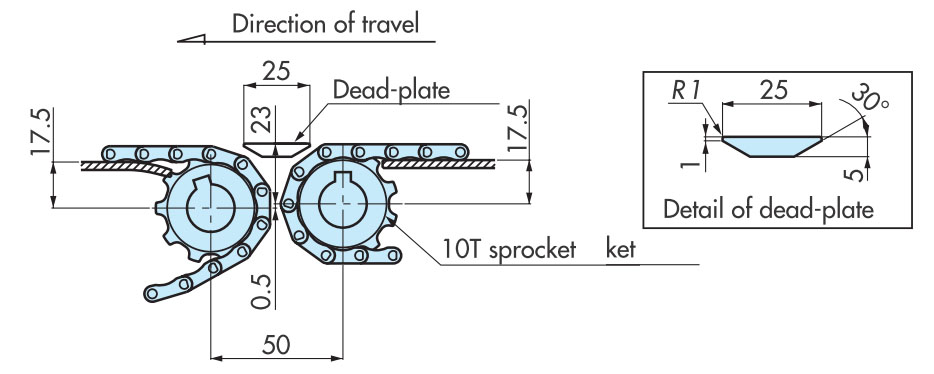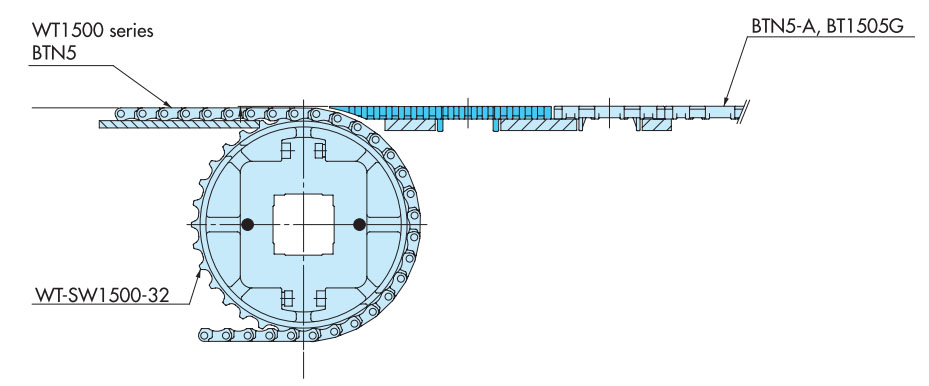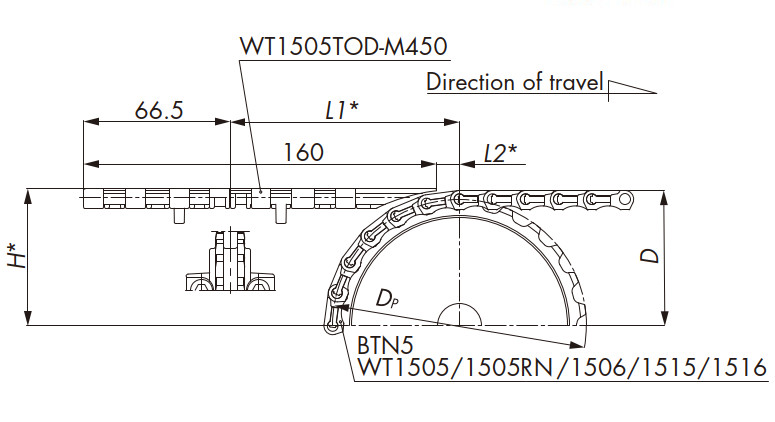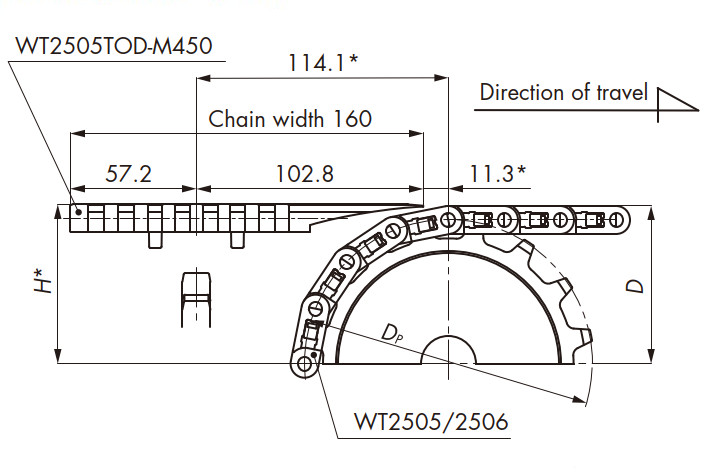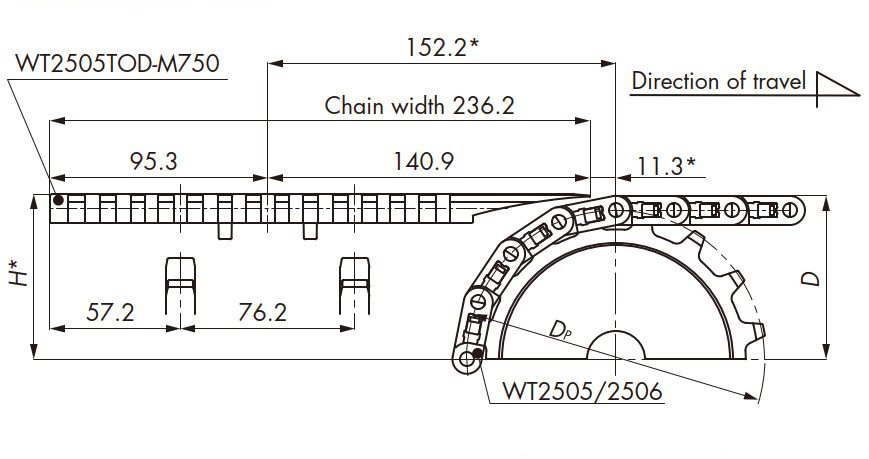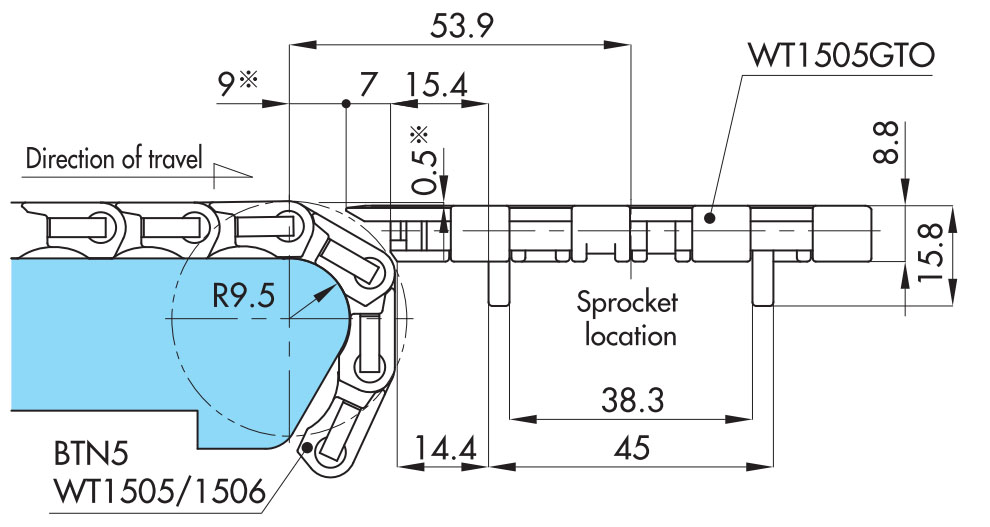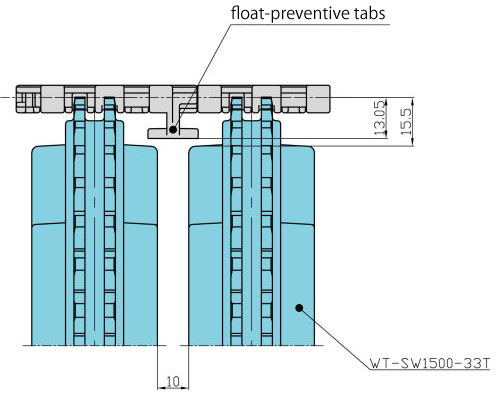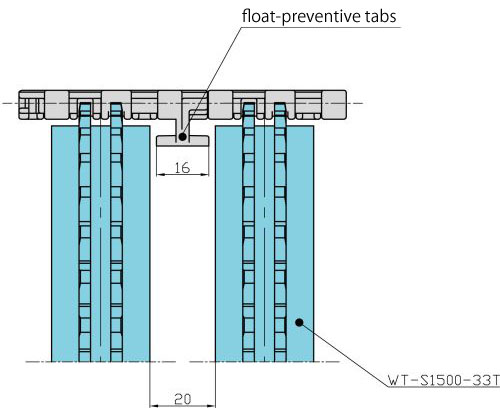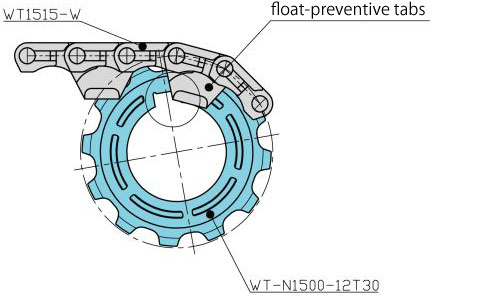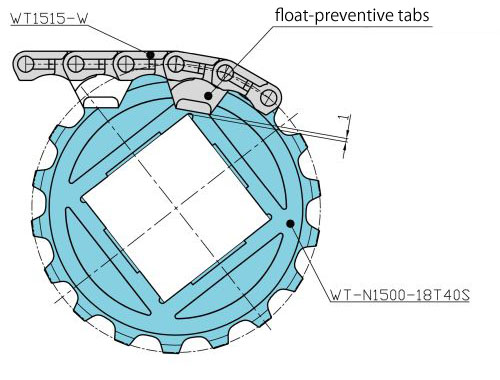Q&A Top chain
The following is a list of answers for frequently asked questions from our customers. Select questions to view the answers.
Words
Top chain
Plastic Top Chain and Plastic Block Chain
Plastic modular chain

| Q1 | What are the classifications of top chains? | |||||||||||||||||||||||||||||||||||||||||||||||||||||||||||||||||||||||||||||||||||||||||||||||||||||||||||||||||||||||||||||||||||||||||||||||||||||||||||||||||||||||||||||||||||||||||||||||||||||||||||||||||||||||||||||||||||||||||||||||||||||||||||||||||||||||||||||||||||||||||||||||||||||||||||||||||||||||||||||||||||||||||||||||||||||||||||||||||||||||||||||||||||||||||||||||||||||||||||||||||||||||||||||||||||||||||||||||||||||||||||||||||||||||||||||||||||||||||||||||||||||||||||||||||||||||||||||||||||||||||||||||||||||||||||||||||||||||||||||||||||||||||||||||||||||||||||||||||||||||||||||||||||||||||||||||||||||||||||||||||||||||||||||||||||||||||||||||||||||||||||||||||||||||||||||||||||||||||||||||||||||||||||||||||||||||||||||||||||
|---|---|---|---|---|---|---|---|---|---|---|---|---|---|---|---|---|---|---|---|---|---|---|---|---|---|---|---|---|---|---|---|---|---|---|---|---|---|---|---|---|---|---|---|---|---|---|---|---|---|---|---|---|---|---|---|---|---|---|---|---|---|---|---|---|---|---|---|---|---|---|---|---|---|---|---|---|---|---|---|---|---|---|---|---|---|---|---|---|---|---|---|---|---|---|---|---|---|---|---|---|---|---|---|---|---|---|---|---|---|---|---|---|---|---|---|---|---|---|---|---|---|---|---|---|---|---|---|---|---|---|---|---|---|---|---|---|---|---|---|---|---|---|---|---|---|---|---|---|---|---|---|---|---|---|---|---|---|---|---|---|---|---|---|---|---|---|---|---|---|---|---|---|---|---|---|---|---|---|---|---|---|---|---|---|---|---|---|---|---|---|---|---|---|---|---|---|---|---|---|---|---|---|---|---|---|---|---|---|---|---|---|---|---|---|---|---|---|---|---|---|---|---|---|---|---|---|---|---|---|---|---|---|---|---|---|---|---|---|---|---|---|---|---|---|---|---|---|---|---|---|---|---|---|---|---|---|---|---|---|---|---|---|---|---|---|---|---|---|---|---|---|---|---|---|---|---|---|---|---|---|---|---|---|---|---|---|---|---|---|---|---|---|---|---|---|---|---|---|---|---|---|---|---|---|---|---|---|---|---|---|---|---|---|---|---|---|---|---|---|---|---|---|---|---|---|---|---|---|---|---|---|---|---|---|---|---|---|---|---|---|---|---|---|---|---|---|---|---|---|---|---|---|---|---|---|---|---|---|---|---|---|---|---|---|---|---|---|---|---|---|---|---|---|---|---|---|---|---|---|---|---|---|---|---|---|---|---|---|---|---|---|---|---|---|---|---|---|---|---|---|---|---|---|---|---|---|---|---|---|---|---|---|---|---|---|---|---|---|---|---|---|---|---|---|---|---|---|---|---|---|---|---|---|---|---|---|---|---|---|---|---|---|---|---|---|---|---|---|---|---|---|---|---|---|---|---|---|---|---|---|---|---|---|---|---|---|---|---|---|---|---|---|---|---|---|---|---|---|---|---|---|---|---|---|---|---|---|---|---|---|---|---|---|---|---|---|---|---|---|---|---|---|---|---|---|---|---|---|---|---|---|---|---|---|---|---|---|---|---|---|---|---|---|---|---|---|---|---|---|---|---|---|---|---|---|---|---|---|---|---|---|---|---|---|---|---|---|---|---|---|---|---|---|---|---|---|---|---|---|---|---|---|---|---|---|---|---|---|---|---|---|---|---|---|---|---|---|---|---|---|---|---|---|---|---|---|---|---|---|---|---|---|---|---|---|---|---|---|---|---|---|---|---|---|---|---|---|---|---|---|---|---|---|---|---|---|---|---|---|---|---|---|---|---|---|---|---|---|---|---|---|---|---|---|---|---|---|---|---|---|---|---|---|---|---|---|---|---|---|---|---|---|---|---|---|---|---|---|---|---|---|---|---|---|---|---|---|---|---|---|---|---|---|---|---|---|---|---|---|---|---|---|---|---|---|---|---|---|---|---|---|---|---|---|---|---|---|---|---|---|---|---|---|---|---|---|---|---|---|---|---|---|---|---|---|---|---|---|---|---|---|---|---|---|---|---|---|---|---|---|---|---|---|---|---|---|---|---|---|---|---|---|---|---|---|---|---|---|---|---|---|---|---|---|---|---|
| A1 |
The top chain consists of three categories of products: plastic top chains made of plastic, stainless steel top chains made of stainless steel, and top chain accessories. For the differences between plastic top chains and stainless steel top chains, please refer to the “Features Chart” and “Summary Comparison of Plastic Top Chains and Stainless Steel Top Chains” below. 【Top chain accessories 】 These are convenient items for peripheral equipment for conveyors, with the optimum combination of various shapes and materials available for each application.
are lineuped as conveyor peripheral components. 【Features Chart 】
【Summary Comparison of Plastic Top Chains and Stainless Steel Top Chains 】
|
|||||||||||||||||||||||||||||||||||||||||||||||||||||||||||||||||||||||||||||||||||||||||||||||||||||||||||||||||||||||||||||||||||||||||||||||||||||||||||||||||||||||||||||||||||||||||||||||||||||||||||||||||||||||||||||||||||||||||||||||||||||||||||||||||||||||||||||||||||||||||||||||||||||||||||||||||||||||||||||||||||||||||||||||||||||||||||||||||||||||||||||||||||||||||||||||||||||||||||||||||||||||||||||||||||||||||||||||||||||||||||||||||||||||||||||||||||||||||||||||||||||||||||||||||||||||||||||||||||||||||||||||||||||||||||||||||||||||||||||||||||||||||||||||||||||||||||||||||||||||||||||||||||||||||||||||||||||||||||||||||||||||||||||||||||||||||||||||||||||||||||||||||||||||||||||||||||||||||||||||||||||||||||||||||||||||||||||||||||
| Q2 | What are the types, features and uses of plastic top chains and stainless steel top chains? | |||||||||||||||||||||||||||||||||||||||||||||||||||||||||||||||||||||||||||||||||||||||||||||||||||||||||||||||||||||||||||||||||||||||||||||||||||||||||||||||||||||||||||||||||||||||||||||||||||||||||||||||||||||||||||||||||||||||||||||||||||||||||||||||||||||||||||||||||||||||||||||||||||||||||||||||||||||||||||||||||||||||||||||||||||||||||||||||||||||||||||||||||||||||||||||||||||||||||||||||||||||||||||||||||||||||||||||||||||||||||||||||||||||||||||||||||||||||||||||||||||||||||||||||||||||||||||||||||||||||||||||||||||||||||||||||||||||||||||||||||||||||||||||||||||||||||||||||||||||||||||||||||||||||||||||||||||||||||||||||||||||||||||||||||||||||||||||||||||||||||||||||||||||||||||||||||||||||||||||||||||||||||||||||||||||||||||||||||||
| A2 |

【Plastic modular chain 】 The brick-like combination of plastic module links with chain structure provides a wide belt-like conveying surface and secure drive by chain and sprocket engagement. Depending on the application and the shape of the material to be conveyed, you can choose from “closed type,” “open type,” “net type,” etc. In addition, “magnet type,” “rubber type,” and “flight type” suitable for inclined conveyance are also available. The conveying surface can be as wide as 50 mm, wider than that of plastic top chain or plastic block chain. [Main purpose(s) ] Ideal for conveying wide items, many items at once, and heavy items

【Plastic top chain 】 The top plate and chain are molded together of plastic and connected by connecting pins. The lineup also includes a format in which only the top plate is made of plastic and the chain is composed of steel. Other types are available with freely rotating rollers attached to the plate to reduce line pressure during accumulation. Top plate width can be selected from 42.0 to 304.8 mm according to the material to be conveyed. [Main purpose(s) ] Ideal for loading and conveying items one by one on plates

【Plastic block chain 】 Simple construction with block-shaped links connected by connecting pins. Smaller chain pitch (9.525 to 25.4 mm) than plastic top chain allows for a smaller sprocket outer diameter. The transfer area (dead space) can be made smaller, which allows smooth transfers. Link widths are as small as 13 to 63 mm, allowing installation in small spaces. [Main purpose(s) ]

【Stainless steel top chain 】 This top chain uses corrosion-resistant stainless steel for its main components. There are types where the top plate is made integral with the chain, and types where the two are joined together. Generally, the maximum allowable load is higher than that of plastic top chains. [Main purpose(s) ]
|
|||||||||||||||||||||||||||||||||||||||||||||||||||||||||||||||||||||||||||||||||||||||||||||||||||||||||||||||||||||||||||||||||||||||||||||||||||||||||||||||||||||||||||||||||||||||||||||||||||||||||||||||||||||||||||||||||||||||||||||||||||||||||||||||||||||||||||||||||||||||||||||||||||||||||||||||||||||||||||||||||||||||||||||||||||||||||||||||||||||||||||||||||||||||||||||||||||||||||||||||||||||||||||||||||||||||||||||||||||||||||||||||||||||||||||||||||||||||||||||||||||||||||||||||||||||||||||||||||||||||||||||||||||||||||||||||||||||||||||||||||||||||||||||||||||||||||||||||||||||||||||||||||||||||||||||||||||||||||||||||||||||||||||||||||||||||||||||||||||||||||||||||||||||||||||||||||||||||||||||||||||||||||||||||||||||||||||||||||||
| Q3 | How to select the specification (material) of Top chain? | |||||||||||||||||||||||||||||||||||||||||||||||||||||||||||||||||||||||||||||||||||||||||||||||||||||||||||||||||||||||||||||||||||||||||||||||||||||||||||||||||||||||||||||||||||||||||||||||||||||||||||||||||||||||||||||||||||||||||||||||||||||||||||||||||||||||||||||||||||||||||||||||||||||||||||||||||||||||||||||||||||||||||||||||||||||||||||||||||||||||||||||||||||||||||||||||||||||||||||||||||||||||||||||||||||||||||||||||||||||||||||||||||||||||||||||||||||||||||||||||||||||||||||||||||||||||||||||||||||||||||||||||||||||||||||||||||||||||||||||||||||||||||||||||||||||||||||||||||||||||||||||||||||||||||||||||||||||||||||||||||||||||||||||||||||||||||||||||||||||||||||||||||||||||||||||||||||||||||||||||||||||||||||||||||||||||||||||||||||
| A3 |
Click on the links below to find out how to select the specification and the applicable table by specification. Back to questions |
|||||||||||||||||||||||||||||||||||||||||||||||||||||||||||||||||||||||||||||||||||||||||||||||||||||||||||||||||||||||||||||||||||||||||||||||||||||||||||||||||||||||||||||||||||||||||||||||||||||||||||||||||||||||||||||||||||||||||||||||||||||||||||||||||||||||||||||||||||||||||||||||||||||||||||||||||||||||||||||||||||||||||||||||||||||||||||||||||||||||||||||||||||||||||||||||||||||||||||||||||||||||||||||||||||||||||||||||||||||||||||||||||||||||||||||||||||||||||||||||||||||||||||||||||||||||||||||||||||||||||||||||||||||||||||||||||||||||||||||||||||||||||||||||||||||||||||||||||||||||||||||||||||||||||||||||||||||||||||||||||||||||||||||||||||||||||||||||||||||||||||||||||||||||||||||||||||||||||||||||||||||||||||||||||||||||||||||||||||
| Q4 | What is the difference between stainless steel pins and plastic pins? | |||||||||||||||||||||||||||||||||||||||||||||||||||||||||||||||||||||||||||||||||||||||||||||||||||||||||||||||||||||||||||||||||||||||||||||||||||||||||||||||||||||||||||||||||||||||||||||||||||||||||||||||||||||||||||||||||||||||||||||||||||||||||||||||||||||||||||||||||||||||||||||||||||||||||||||||||||||||||||||||||||||||||||||||||||||||||||||||||||||||||||||||||||||||||||||||||||||||||||||||||||||||||||||||||||||||||||||||||||||||||||||||||||||||||||||||||||||||||||||||||||||||||||||||||||||||||||||||||||||||||||||||||||||||||||||||||||||||||||||||||||||||||||||||||||||||||||||||||||||||||||||||||||||||||||||||||||||||||||||||||||||||||||||||||||||||||||||||||||||||||||||||||||||||||||||||||||||||||||||||||||||||||||||||||||||||||||||||||||
| A4 |
With its light weight and easy handling, plastic pins are predominant for plastic modular chains and plastic top chains. The use of plastic pins is recommended when there is exposure to water only (adhering to conveyed items from the previous process) since stainless steel pins have a shorter service life when exposed to water. Stainless steel pins are becoming predominant for plastic block chain. Depending on the product, the allowable load is greater than with plastic pins. Stainless steel pins are recommended when there are impacts on the chain. with plastic pin
Allowable load roughly equal to stainless steel pins (80% to 100%) Long life: A combination of proprietary Tsubaki materials allows the chain to exhibit outstanding wear resistance between the pin and bushes under dry, soapy water, or wet conditions. The chain works particularly well when using water as the lubricant. Lightweight: 15% to 25% lighter than stainless steel pin top chains. Easy to handle and effective in reducing noise and required power. Easy disposal: As the entire chain is made of plastic, it can be disposed of as is. Conforms to food sanitation regulations: The links and pins are manufactured from materials that are in accordance with Japan's Food Sanitation Act. Note: Refer to Technical notes, handling of top chain, precaution of plastic pin and disconnection/connection.
|
|||||||||||||||||||||||||||||||||||||||||||||||||||||||||||||||||||||||||||||||||||||||||||||||||||||||||||||||||||||||||||||||||||||||||||||||||||||||||||||||||||||||||||||||||||||||||||||||||||||||||||||||||||||||||||||||||||||||||||||||||||||||||||||||||||||||||||||||||||||||||||||||||||||||||||||||||||||||||||||||||||||||||||||||||||||||||||||||||||||||||||||||||||||||||||||||||||||||||||||||||||||||||||||||||||||||||||||||||||||||||||||||||||||||||||||||||||||||||||||||||||||||||||||||||||||||||||||||||||||||||||||||||||||||||||||||||||||||||||||||||||||||||||||||||||||||||||||||||||||||||||||||||||||||||||||||||||||||||||||||||||||||||||||||||||||||||||||||||||||||||||||||||||||||||||||||||||||||||||||||||||||||||||||||||||||||||||||||||||
| Q5 | How do I select rail material? | |||||||||||||||||||||||||||||||||||||||||||||||||||||||||||||||||||||||||||||||||||||||||||||||||||||||||||||||||||||||||||||||||||||||||||||||||||||||||||||||||||||||||||||||||||||||||||||||||||||||||||||||||||||||||||||||||||||||||||||||||||||||||||||||||||||||||||||||||||||||||||||||||||||||||||||||||||||||||||||||||||||||||||||||||||||||||||||||||||||||||||||||||||||||||||||||||||||||||||||||||||||||||||||||||||||||||||||||||||||||||||||||||||||||||||||||||||||||||||||||||||||||||||||||||||||||||||||||||||||||||||||||||||||||||||||||||||||||||||||||||||||||||||||||||||||||||||||||||||||||||||||||||||||||||||||||||||||||||||||||||||||||||||||||||||||||||||||||||||||||||||||||||||||||||||||||||||||||||||||||||||||||||||||||||||||||||||||||||||
| A5 |
When installing plastic chains, rails are generally installed as well to guide the chain. Select the material for your rail based on your application and purpose. General applications
Rails made of ultra-high molecular weight polyethylene (Plastic rail and plastic rails) are often used. Recommended for use in lubricated conditions. Suppresses the generation of wear debris
PLF rail or M-rail is recommended. In addition, stainless steel (polished specification) and metal rails (hard Cr plating + buff finish) also reduce the generation of wear powder. ※M-rail is for dry conditions only. Do not use in lubrication or where water may splash on it. ※Wear dust generated on stainless steel and other metal rails will be black in color with metal powder. Click here for details on the features of each rail When using in high temperature conditions
Metallic rails are recommended. Use smoothly polished or hard chromium finished + buffed top finished rails. Use at High Temperature Recommended wearstrip material is cold-rolled stainless steel. Secure only one end of wearstrips to allow for thermal expansion. Also, remember to leave a gap between wearstrips to allow for thermal expansion.
(Reference: Coefficient of linear expansion for 304 stainless steel is 1.8 x 10-5 mm/mm/℃) Standard steel sprockets can be used for ambient temperatures below 150℃. Special sprockets must be used at temperatures higher than 150℃. Contact a Tsubaki representative for details. Spacing between chains when multiple strands are used is shown below.
Take-up must be done to compensate for slack in the chain caused by thermal expansion. Take-up adjustments should be performed after reaching operating temperature. Lower temperatures only after loosening take-up. Black wear dust will be generated. Be sure to clean on a regular basis. Start up slowly (using inverter control) and stop slowly
Note)
Note: Operating temperature range
|
|||||||||||||||||||||||||||||||||||||||||||||||||||||||||||||||||||||||||||||||||||||||||||||||||||||||||||||||||||||||||||||||||||||||||||||||||||||||||||||||||||||||||||||||||||||||||||||||||||||||||||||||||||||||||||||||||||||||||||||||||||||||||||||||||||||||||||||||||||||||||||||||||||||||||||||||||||||||||||||||||||||||||||||||||||||||||||||||||||||||||||||||||||||||||||||||||||||||||||||||||||||||||||||||||||||||||||||||||||||||||||||||||||||||||||||||||||||||||||||||||||||||||||||||||||||||||||||||||||||||||||||||||||||||||||||||||||||||||||||||||||||||||||||||||||||||||||||||||||||||||||||||||||||||||||||||||||||||||||||||||||||||||||||||||||||||||||||||||||||||||||||||||||||||||||||||||||||||||||||||||||||||||||||||||||||||||||||||||||
| Q6 | How do I install straight rails? | |||||||||||||||||||||||||||||||||||||||||||||||||||||||||||||||||||||||||||||||||||||||||||||||||||||||||||||||||||||||||||||||||||||||||||||||||||||||||||||||||||||||||||||||||||||||||||||||||||||||||||||||||||||||||||||||||||||||||||||||||||||||||||||||||||||||||||||||||||||||||||||||||||||||||||||||||||||||||||||||||||||||||||||||||||||||||||||||||||||||||||||||||||||||||||||||||||||||||||||||||||||||||||||||||||||||||||||||||||||||||||||||||||||||||||||||||||||||||||||||||||||||||||||||||||||||||||||||||||||||||||||||||||||||||||||||||||||||||||||||||||||||||||||||||||||||||||||||||||||||||||||||||||||||||||||||||||||||||||||||||||||||||||||||||||||||||||||||||||||||||||||||||||||||||||||||||||||||||||||||||||||||||||||||||||||||||||||||||||
| A6 |
When plastic rails (plastic rail, PLF rail, M-rail) are used for straight rails, please provide a gap between the rails to allow for expansion due to heat. In addition, the rails should be fixed with screws at one end. Tongue and groove wearstrips (PR, PH), flat wearstrips
Gap between tongue and groove wearstrips … 3 to 5 mm Coefficients of linear expansion Plastic rail (P rail )・(PLF rail ) 20×10-5mm/mm/℃")%> M plastic rail 9×10-5mm/mm/℃ Note)
Mounting long straight wearstrip (extruded wearstrips such as Z, T, L, and flat) when the conveyor length is long
Mounting long straight wearstrip (extruded wearstrips such as Z, T, L, and flat) when the conveyor length is short
Back to questions |
|||||||||||||||||||||||||||||||||||||||||||||||||||||||||||||||||||||||||||||||||||||||||||||||||||||||||||||||||||||||||||||||||||||||||||||||||||||||||||||||||||||||||||||||||||||||||||||||||||||||||||||||||||||||||||||||||||||||||||||||||||||||||||||||||||||||||||||||||||||||||||||||||||||||||||||||||||||||||||||||||||||||||||||||||||||||||||||||||||||||||||||||||||||||||||||||||||||||||||||||||||||||||||||||||||||||||||||||||||||||||||||||||||||||||||||||||||||||||||||||||||||||||||||||||||||||||||||||||||||||||||||||||||||||||||||||||||||||||||||||||||||||||||||||||||||||||||||||||||||||||||||||||||||||||||||||||||||||||||||||||||||||||||||||||||||||||||||||||||||||||||||||||||||||||||||||||||||||||||||||||||||||||||||||||||||||||||||||||||
| Q7 | Are there any examples of Advanced Low Friction/Wear Resistant (ALF) Series? | |||||||||||||||||||||||||||||||||||||||||||||||||||||||||||||||||||||||||||||||||||||||||||||||||||||||||||||||||||||||||||||||||||||||||||||||||||||||||||||||||||||||||||||||||||||||||||||||||||||||||||||||||||||||||||||||||||||||||||||||||||||||||||||||||||||||||||||||||||||||||||||||||||||||||||||||||||||||||||||||||||||||||||||||||||||||||||||||||||||||||||||||||||||||||||||||||||||||||||||||||||||||||||||||||||||||||||||||||||||||||||||||||||||||||||||||||||||||||||||||||||||||||||||||||||||||||||||||||||||||||||||||||||||||||||||||||||||||||||||||||||||||||||||||||||||||||||||||||||||||||||||||||||||||||||||||||||||||||||||||||||||||||||||||||||||||||||||||||||||||||||||||||||||||||||||||||||||||||||||||||||||||||||||||||||||||||||||||||||
| A7 |
There are many examples, but we will introduce some typical examples.
|
|||||||||||||||||||||||||||||||||||||||||||||||||||||||||||||||||||||||||||||||||||||||||||||||||||||||||||||||||||||||||||||||||||||||||||||||||||||||||||||||||||||||||||||||||||||||||||||||||||||||||||||||||||||||||||||||||||||||||||||||||||||||||||||||||||||||||||||||||||||||||||||||||||||||||||||||||||||||||||||||||||||||||||||||||||||||||||||||||||||||||||||||||||||||||||||||||||||||||||||||||||||||||||||||||||||||||||||||||||||||||||||||||||||||||||||||||||||||||||||||||||||||||||||||||||||||||||||||||||||||||||||||||||||||||||||||||||||||||||||||||||||||||||||||||||||||||||||||||||||||||||||||||||||||||||||||||||||||||||||||||||||||||||||||||||||||||||||||||||||||||||||||||||||||||||||||||||||||||||||||||||||||||||||||||||||||||||||||||||
| Q8 | What is the corrosion resistance of the top chain material? | |||||||||||||||||||||||||||||||||||||||||||||||||||||||||||||||||||||||||||||||||||||||||||||||||||||||||||||||||||||||||||||||||||||||||||||||||||||||||||||||||||||||||||||||||||||||||||||||||||||||||||||||||||||||||||||||||||||||||||||||||||||||||||||||||||||||||||||||||||||||||||||||||||||||||||||||||||||||||||||||||||||||||||||||||||||||||||||||||||||||||||||||||||||||||||||||||||||||||||||||||||||||||||||||||||||||||||||||||||||||||||||||||||||||||||||||||||||||||||||||||||||||||||||||||||||||||||||||||||||||||||||||||||||||||||||||||||||||||||||||||||||||||||||||||||||||||||||||||||||||||||||||||||||||||||||||||||||||||||||||||||||||||||||||||||||||||||||||||||||||||||||||||||||||||||||||||||||||||||||||||||||||||||||||||||||||||||||||||||
| A8 |
When selecting a chain, check from the table below that its material is adequate. This corrosion resistance can also be used to check the rail material used with the top chain. Note that the results in this table are based on a 20°C atmosphere and do not represent the degree of guarantee. Comprehensively consider the temperature/usage conditions, etc. in actual use. The table below lists the materials (specifications) of the top plate and chain components individually, so please check them in combination. Reagents without a concentration indication are saturated or 100% solution. Note that conditions will change when solutions are mixed together. [Corrosion resistance to various liquids ]
Note)
|
|||||||||||||||||||||||||||||||||||||||||||||||||||||||||||||||||||||||||||||||||||||||||||||||||||||||||||||||||||||||||||||||||||||||||||||||||||||||||||||||||||||||||||||||||||||||||||||||||||||||||||||||||||||||||||||||||||||||||||||||||||||||||||||||||||||||||||||||||||||||||||||||||||||||||||||||||||||||||||||||||||||||||||||||||||||||||||||||||||||||||||||||||||||||||||||||||||||||||||||||||||||||||||||||||||||||||||||||||||||||||||||||||||||||||||||||||||||||||||||||||||||||||||||||||||||||||||||||||||||||||||||||||||||||||||||||||||||||||||||||||||||||||||||||||||||||||||||||||||||||||||||||||||||||||||||||||||||||||||||||||||||||||||||||||||||||||||||||||||||||||||||||||||||||||||||||||||||||||||||||||||||||||||||||||||||||||||||||||||
| Q9 | What are some conveyor designs for top chain and plastic block chain? | |||||||||||||||||||||||||||||||||||||||||||||||||||||||||||||||||||||||||||||||||||||||||||||||||||||||||||||||||||||||||||||||||||||||||||||||||||||||||||||||||||||||||||||||||||||||||||||||||||||||||||||||||||||||||||||||||||||||||||||||||||||||||||||||||||||||||||||||||||||||||||||||||||||||||||||||||||||||||||||||||||||||||||||||||||||||||||||||||||||||||||||||||||||||||||||||||||||||||||||||||||||||||||||||||||||||||||||||||||||||||||||||||||||||||||||||||||||||||||||||||||||||||||||||||||||||||||||||||||||||||||||||||||||||||||||||||||||||||||||||||||||||||||||||||||||||||||||||||||||||||||||||||||||||||||||||||||||||||||||||||||||||||||||||||||||||||||||||||||||||||||||||||||||||||||||||||||||||||||||||||||||||||||||||||||||||||||||||||||
| A9 |
Generally, for plastic chain, the wearstrip should support the chain on the carry way, and the chain should be slack on the return way. Chain slack below the drive sprocket is especially important. Ensure there is 50 - 100mm of slack for 500 - 900mm spans (in drive operations). Tooth jumping (skipping) may occur with other slack values. The layout of the supports for chains will vary according to the installation space available and other parameters. A typical layout is shown below. See Question No.8 for the layout of the return way of the chain.
Chain slack Return rollers should be spaced at intervals of 500 to 900 mm to support the return way of the chain. The amount of slack in the chain between return rollers should be 50 to 100 mm. This slack prevents tooth jumping (skipping). Tooth jumping may occur when the amount of slack in these intervals falls outside of this range. Engagement angle The engagement angle between the drive sprocket and the chain must be greater than 150°. Wearstrip ends A distance equivalent to the pitch spacing of the chain must be established between the end of the wearstrip and the respective shaft centers on both the drive and driven ends. Also, the tail end of the return wearstrip on the driven side must be rounded or chamfered (sloped) to prevent catching or snagging of the chain on the wearstrip. Height of carry-way wearstrip Refer to Technical notes, conveyor design, rail mounting on drive/driven side. Back to questions |
|||||||||||||||||||||||||||||||||||||||||||||||||||||||||||||||||||||||||||||||||||||||||||||||||||||||||||||||||||||||||||||||||||||||||||||||||||||||||||||||||||||||||||||||||||||||||||||||||||||||||||||||||||||||||||||||||||||||||||||||||||||||||||||||||||||||||||||||||||||||||||||||||||||||||||||||||||||||||||||||||||||||||||||||||||||||||||||||||||||||||||||||||||||||||||||||||||||||||||||||||||||||||||||||||||||||||||||||||||||||||||||||||||||||||||||||||||||||||||||||||||||||||||||||||||||||||||||||||||||||||||||||||||||||||||||||||||||||||||||||||||||||||||||||||||||||||||||||||||||||||||||||||||||||||||||||||||||||||||||||||||||||||||||||||||||||||||||||||||||||||||||||||||||||||||||||||||||||||||||||||||||||||||||||||||||||||||||||||||
| Q10 | Return way layout for top chain and plastic block chain | |||||||||||||||||||||||||||||||||||||||||||||||||||||||||||||||||||||||||||||||||||||||||||||||||||||||||||||||||||||||||||||||||||||||||||||||||||||||||||||||||||||||||||||||||||||||||||||||||||||||||||||||||||||||||||||||||||||||||||||||||||||||||||||||||||||||||||||||||||||||||||||||||||||||||||||||||||||||||||||||||||||||||||||||||||||||||||||||||||||||||||||||||||||||||||||||||||||||||||||||||||||||||||||||||||||||||||||||||||||||||||||||||||||||||||||||||||||||||||||||||||||||||||||||||||||||||||||||||||||||||||||||||||||||||||||||||||||||||||||||||||||||||||||||||||||||||||||||||||||||||||||||||||||||||||||||||||||||||||||||||||||||||||||||||||||||||||||||||||||||||||||||||||||||||||||||||||||||||||||||||||||||||||||||||||||||||||||||||||
| A10 |
As the most common layout, we recommend supporting your chain with return rollers. Supporting with return roller enables to you to set an applicable chain slack and absorb elongation. When using chains with float-preventive tabs, you can also support the chain through the sliding action of the tabs. However, consider using a system (such as a tensioner) to absorb chain elongation. The return-way layout will vary according to the type of chain, the type of goods being conveyed, the flow system and route topology, but in general, layouts will be similar to those illustrated below.
|
|||||||||||||||||||||||||||||||||||||||||||||||||||||||||||||||||||||||||||||||||||||||||||||||||||||||||||||||||||||||||||||||||||||||||||||||||||||||||||||||||||||||||||||||||||||||||||||||||||||||||||||||||||||||||||||||||||||||||||||||||||||||||||||||||||||||||||||||||||||||||||||||||||||||||||||||||||||||||||||||||||||||||||||||||||||||||||||||||||||||||||||||||||||||||||||||||||||||||||||||||||||||||||||||||||||||||||||||||||||||||||||||||||||||||||||||||||||||||||||||||||||||||||||||||||||||||||||||||||||||||||||||||||||||||||||||||||||||||||||||||||||||||||||||||||||||||||||||||||||||||||||||||||||||||||||||||||||||||||||||||||||||||||||||||||||||||||||||||||||||||||||||||||||||||||||||||||||||||||||||||||||||||||||||||||||||||||||||||||
| Q11 | Conveyors using corner discs | |||||||||||||||||||||||||||||||||||||||||||||||||||||||||||||||||||||||||||||||||||||||||||||||||||||||||||||||||||||||||||||||||||||||||||||||||||||||||||||||||||||||||||||||||||||||||||||||||||||||||||||||||||||||||||||||||||||||||||||||||||||||||||||||||||||||||||||||||||||||||||||||||||||||||||||||||||||||||||||||||||||||||||||||||||||||||||||||||||||||||||||||||||||||||||||||||||||||||||||||||||||||||||||||||||||||||||||||||||||||||||||||||||||||||||||||||||||||||||||||||||||||||||||||||||||||||||||||||||||||||||||||||||||||||||||||||||||||||||||||||||||||||||||||||||||||||||||||||||||||||||||||||||||||||||||||||||||||||||||||||||||||||||||||||||||||||||||||||||||||||||||||||||||||||||||||||||||||||||||||||||||||||||||||||||||||||||||||||||
| A11 |
For chains with a small sideflex radius (minimum sideflex radius (under R190)), install a corner disc when manufacturing a conveyor with a small sideflex radius. A corner disc should be installed at the center of the sideflex radius for the conveying surface and return way sides. Curved Section Using Corner Disc on TPUSR Chain
Explanation of symbols
As shown in the figure below, for chains supported by return rollers, rollers must be installed to guide the straight portion of the return-way chain at the point where the chain enters and exits the corner. Note: Use in a dry environment is recommended.
|
|||||||||||||||||||||||||||||||||||||||||||||||||||||||||||||||||||||||||||||||||||||||||||||||||||||||||||||||||||||||||||||||||||||||||||||||||||||||||||||||||||||||||||||||||||||||||||||||||||||||||||||||||||||||||||||||||||||||||||||||||||||||||||||||||||||||||||||||||||||||||||||||||||||||||||||||||||||||||||||||||||||||||||||||||||||||||||||||||||||||||||||||||||||||||||||||||||||||||||||||||||||||||||||||||||||||||||||||||||||||||||||||||||||||||||||||||||||||||||||||||||||||||||||||||||||||||||||||||||||||||||||||||||||||||||||||||||||||||||||||||||||||||||||||||||||||||||||||||||||||||||||||||||||||||||||||||||||||||||||||||||||||||||||||||||||||||||||||||||||||||||||||||||||||||||||||||||||||||||||||||||||||||||||||||||||||||||||||||||
| Q12 | What are some conveyor designs for plastic crescent chain? | |||||||||||||||||||||||||||||||||||||||||||||||||||||||||||||||||||||||||||||||||||||||||||||||||||||||||||||||||||||||||||||||||||||||||||||||||||||||||||||||||||||||||||||||||||||||||||||||||||||||||||||||||||||||||||||||||||||||||||||||||||||||||||||||||||||||||||||||||||||||||||||||||||||||||||||||||||||||||||||||||||||||||||||||||||||||||||||||||||||||||||||||||||||||||||||||||||||||||||||||||||||||||||||||||||||||||||||||||||||||||||||||||||||||||||||||||||||||||||||||||||||||||||||||||||||||||||||||||||||||||||||||||||||||||||||||||||||||||||||||||||||||||||||||||||||||||||||||||||||||||||||||||||||||||||||||||||||||||||||||||||||||||||||||||||||||||||||||||||||||||||||||||||||||||||||||||||||||||||||||||||||||||||||||||||||||||||||||||||
| A12 |
Plastic crescent chain is designed for use in horizontal conveyors. For TORP types with rollers, guide the chain with a sprocket or wearstrip at the corners. For TORP types without rollers, use sprockets at the corners. For horizontal conveyance, a take-up mechanism must be installed to absorb elongation resulting from temperature changes or wear elongation of the conveyor. Without one, tooth jumping (skipping) can occur. Wearstrip layout Layout will vary depending on the installation space, but the following examples can be used for reference. Wearstrip layout example 1 … Using TOSP1143 and corner sprocket Wearstrip layout example 2 … Using TORP1143 and corner sprocket Wearstrip layout example 3 … Using TORP1143 and curved wearstrip Precautions on conveyor layout A take-up mechanism must be installed to absorb elongation resulting from temperature changes or wear elongation of the conveyor. See example below for reference.
|
|||||||||||||||||||||||||||||||||||||||||||||||||||||||||||||||||||||||||||||||||||||||||||||||||||||||||||||||||||||||||||||||||||||||||||||||||||||||||||||||||||||||||||||||||||||||||||||||||||||||||||||||||||||||||||||||||||||||||||||||||||||||||||||||||||||||||||||||||||||||||||||||||||||||||||||||||||||||||||||||||||||||||||||||||||||||||||||||||||||||||||||||||||||||||||||||||||||||||||||||||||||||||||||||||||||||||||||||||||||||||||||||||||||||||||||||||||||||||||||||||||||||||||||||||||||||||||||||||||||||||||||||||||||||||||||||||||||||||||||||||||||||||||||||||||||||||||||||||||||||||||||||||||||||||||||||||||||||||||||||||||||||||||||||||||||||||||||||||||||||||||||||||||||||||||||||||||||||||||||||||||||||||||||||||||||||||||||||||||
| Q13 | How do I disconnect and assemble plastic top chain and plastic block chain? | |||||||||||||||||||||||||||||||||||||||||||||||||||||||||||||||||||||||||||||||||||||||||||||||||||||||||||||||||||||||||||||||||||||||||||||||||||||||||||||||||||||||||||||||||||||||||||||||||||||||||||||||||||||||||||||||||||||||||||||||||||||||||||||||||||||||||||||||||||||||||||||||||||||||||||||||||||||||||||||||||||||||||||||||||||||||||||||||||||||||||||||||||||||||||||||||||||||||||||||||||||||||||||||||||||||||||||||||||||||||||||||||||||||||||||||||||||||||||||||||||||||||||||||||||||||||||||||||||||||||||||||||||||||||||||||||||||||||||||||||||||||||||||||||||||||||||||||||||||||||||||||||||||||||||||||||||||||||||||||||||||||||||||||||||||||||||||||||||||||||||||||||||||||||||||||||||||||||||||||||||||||||||||||||||||||||||||||||||||
| A13 |
Connecting pins differ by type. Disassemble, cut, or connect with a punch and hammer suited to the shape of the connecting pins. Only plastic crescent chain has a unique structure. See below for further information. When D-pins are used (except TPUN555) The chain can be disconnected at any link and the pin can be removed from either the left or the right.
When knurled pins are used To disconnect, place a punch on the end of the connecting pin on the side that is not knurled and lightly tap it with a hammer to remove it. To reconnect, place a punch on the end of the connecting pin on the knurled side and lightly tap it with a hammer to insert it.(For TTPDH and TTPDH-LBP only, the knurled side is inserted from the same side even for reconnecting.)
For TN, TNU, TRU, TP-1873T The pin for the connecting link is loosely fitted on the appropriate side of the outer plate. When disconnecting the chain at links other than the connecting link, remove a pair of pins parallel to one another by means of a chain vice. Once a chain is disconnected at links other than the connecting link, the link cannot be reused. When D-pins are used (except TPUN555) Pin insertion direction is from one direction only. Place a punch on the opposite end of the pin from the insertion direction, and tap it lightly with a hammer to remove it. For Plastic Crescent Top Chain
1.Remove the snap cotter pin from the connecting pin, and carefully pull the offset link up and off.
2.Turn the offset link 90 degrees.
3.Remove the main link and the connecting pin from the previous link.
Note: When disconnecting, be sure not to pull the connecting pin out of the main link. Back to questions |
|||||||||||||||||||||||||||||||||||||||||||||||||||||||||||||||||||||||||||||||||||||||||||||||||||||||||||||||||||||||||||||||||||||||||||||||||||||||||||||||||||||||||||||||||||||||||||||||||||||||||||||||||||||||||||||||||||||||||||||||||||||||||||||||||||||||||||||||||||||||||||||||||||||||||||||||||||||||||||||||||||||||||||||||||||||||||||||||||||||||||||||||||||||||||||||||||||||||||||||||||||||||||||||||||||||||||||||||||||||||||||||||||||||||||||||||||||||||||||||||||||||||||||||||||||||||||||||||||||||||||||||||||||||||||||||||||||||||||||||||||||||||||||||||||||||||||||||||||||||||||||||||||||||||||||||||||||||||||||||||||||||||||||||||||||||||||||||||||||||||||||||||||||||||||||||||||||||||||||||||||||||||||||||||||||||||||||||||||||
| Q14 | What should I be careful of when using plastic top chain, plastic block chain, and plastic pins? | |||||||||||||||||||||||||||||||||||||||||||||||||||||||||||||||||||||||||||||||||||||||||||||||||||||||||||||||||||||||||||||||||||||||||||||||||||||||||||||||||||||||||||||||||||||||||||||||||||||||||||||||||||||||||||||||||||||||||||||||||||||||||||||||||||||||||||||||||||||||||||||||||||||||||||||||||||||||||||||||||||||||||||||||||||||||||||||||||||||||||||||||||||||||||||||||||||||||||||||||||||||||||||||||||||||||||||||||||||||||||||||||||||||||||||||||||||||||||||||||||||||||||||||||||||||||||||||||||||||||||||||||||||||||||||||||||||||||||||||||||||||||||||||||||||||||||||||||||||||||||||||||||||||||||||||||||||||||||||||||||||||||||||||||||||||||||||||||||||||||||||||||||||||||||||||||||||||||||||||||||||||||||||||||||||||||||||||||||||
| A14 |
Once removed, pins should not be reused to prevent a reduced push out force and other problems with pins falling out. The disassembling pin is colored orange so as to distinguish it from base-chain pins (colored white). Use the disassembling pin included with chain when cutting. Avoid use in wet environments where temperatures exceed 60℃. Pin may break. Back to questions |
|||||||||||||||||||||||||||||||||||||||||||||||||||||||||||||||||||||||||||||||||||||||||||||||||||||||||||||||||||||||||||||||||||||||||||||||||||||||||||||||||||||||||||||||||||||||||||||||||||||||||||||||||||||||||||||||||||||||||||||||||||||||||||||||||||||||||||||||||||||||||||||||||||||||||||||||||||||||||||||||||||||||||||||||||||||||||||||||||||||||||||||||||||||||||||||||||||||||||||||||||||||||||||||||||||||||||||||||||||||||||||||||||||||||||||||||||||||||||||||||||||||||||||||||||||||||||||||||||||||||||||||||||||||||||||||||||||||||||||||||||||||||||||||||||||||||||||||||||||||||||||||||||||||||||||||||||||||||||||||||||||||||||||||||||||||||||||||||||||||||||||||||||||||||||||||||||||||||||||||||||||||||||||||||||||||||||||||||||||
| Q15 | Is forward-reverse operation possible with plastic top chain and plastic block chain? | |||||||||||||||||||||||||||||||||||||||||||||||||||||||||||||||||||||||||||||||||||||||||||||||||||||||||||||||||||||||||||||||||||||||||||||||||||||||||||||||||||||||||||||||||||||||||||||||||||||||||||||||||||||||||||||||||||||||||||||||||||||||||||||||||||||||||||||||||||||||||||||||||||||||||||||||||||||||||||||||||||||||||||||||||||||||||||||||||||||||||||||||||||||||||||||||||||||||||||||||||||||||||||||||||||||||||||||||||||||||||||||||||||||||||||||||||||||||||||||||||||||||||||||||||||||||||||||||||||||||||||||||||||||||||||||||||||||||||||||||||||||||||||||||||||||||||||||||||||||||||||||||||||||||||||||||||||||||||||||||||||||||||||||||||||||||||||||||||||||||||||||||||||||||||||||||||||||||||||||||||||||||||||||||||||||||||||||||||||
| A15 |
The direction of plastic top chains and plastic block chains is set. Forward-reverse operation is not recommended. If considering forward-reverse operation, consider using plastic modular chains. Back to questions |
|||||||||||||||||||||||||||||||||||||||||||||||||||||||||||||||||||||||||||||||||||||||||||||||||||||||||||||||||||||||||||||||||||||||||||||||||||||||||||||||||||||||||||||||||||||||||||||||||||||||||||||||||||||||||||||||||||||||||||||||||||||||||||||||||||||||||||||||||||||||||||||||||||||||||||||||||||||||||||||||||||||||||||||||||||||||||||||||||||||||||||||||||||||||||||||||||||||||||||||||||||||||||||||||||||||||||||||||||||||||||||||||||||||||||||||||||||||||||||||||||||||||||||||||||||||||||||||||||||||||||||||||||||||||||||||||||||||||||||||||||||||||||||||||||||||||||||||||||||||||||||||||||||||||||||||||||||||||||||||||||||||||||||||||||||||||||||||||||||||||||||||||||||||||||||||||||||||||||||||||||||||||||||||||||||||||||||||||||||
| Q16 | How to use TTP, TPF, TPS, and TPH for straight running? | |||||||||||||||||||||||||||||||||||||||||||||||||||||||||||||||||||||||||||||||||||||||||||||||||||||||||||||||||||||||||||||||||||||||||||||||||||||||||||||||||||||||||||||||||||||||||||||||||||||||||||||||||||||||||||||||||||||||||||||||||||||||||||||||||||||||||||||||||||||||||||||||||||||||||||||||||||||||||||||||||||||||||||||||||||||||||||||||||||||||||||||||||||||||||||||||||||||||||||||||||||||||||||||||||||||||||||||||||||||||||||||||||||||||||||||||||||||||||||||||||||||||||||||||||||||||||||||||||||||||||||||||||||||||||||||||||||||||||||||||||||||||||||||||||||||||||||||||||||||||||||||||||||||||||||||||||||||||||||||||||||||||||||||||||||||||||||||||||||||||||||||||||||||||||||||||||||||||||||||||||||||||||||||||||||||||||||||||||||
| A16 |
See the table below for the difference in use between TTP and TPF, TPS, and TPH for straight running.
|
|||||||||||||||||||||||||||||||||||||||||||||||||||||||||||||||||||||||||||||||||||||||||||||||||||||||||||||||||||||||||||||||||||||||||||||||||||||||||||||||||||||||||||||||||||||||||||||||||||||||||||||||||||||||||||||||||||||||||||||||||||||||||||||||||||||||||||||||||||||||||||||||||||||||||||||||||||||||||||||||||||||||||||||||||||||||||||||||||||||||||||||||||||||||||||||||||||||||||||||||||||||||||||||||||||||||||||||||||||||||||||||||||||||||||||||||||||||||||||||||||||||||||||||||||||||||||||||||||||||||||||||||||||||||||||||||||||||||||||||||||||||||||||||||||||||||||||||||||||||||||||||||||||||||||||||||||||||||||||||||||||||||||||||||||||||||||||||||||||||||||||||||||||||||||||||||||||||||||||||||||||||||||||||||||||||||||||||||||||
| Q17 | How to use TTUP and TPU for curved side flexing running? | |||||||||||||||||||||||||||||||||||||||||||||||||||||||||||||||||||||||||||||||||||||||||||||||||||||||||||||||||||||||||||||||||||||||||||||||||||||||||||||||||||||||||||||||||||||||||||||||||||||||||||||||||||||||||||||||||||||||||||||||||||||||||||||||||||||||||||||||||||||||||||||||||||||||||||||||||||||||||||||||||||||||||||||||||||||||||||||||||||||||||||||||||||||||||||||||||||||||||||||||||||||||||||||||||||||||||||||||||||||||||||||||||||||||||||||||||||||||||||||||||||||||||||||||||||||||||||||||||||||||||||||||||||||||||||||||||||||||||||||||||||||||||||||||||||||||||||||||||||||||||||||||||||||||||||||||||||||||||||||||||||||||||||||||||||||||||||||||||||||||||||||||||||||||||||||||||||||||||||||||||||||||||||||||||||||||||||||||||||
| A17 |
See the table below for the use of TTUP and TPU for side flexing running conveyance.
|
|||||||||||||||||||||||||||||||||||||||||||||||||||||||||||||||||||||||||||||||||||||||||||||||||||||||||||||||||||||||||||||||||||||||||||||||||||||||||||||||||||||||||||||||||||||||||||||||||||||||||||||||||||||||||||||||||||||||||||||||||||||||||||||||||||||||||||||||||||||||||||||||||||||||||||||||||||||||||||||||||||||||||||||||||||||||||||||||||||||||||||||||||||||||||||||||||||||||||||||||||||||||||||||||||||||||||||||||||||||||||||||||||||||||||||||||||||||||||||||||||||||||||||||||||||||||||||||||||||||||||||||||||||||||||||||||||||||||||||||||||||||||||||||||||||||||||||||||||||||||||||||||||||||||||||||||||||||||||||||||||||||||||||||||||||||||||||||||||||||||||||||||||||||||||||||||||||||||||||||||||||||||||||||||||||||||||||||||||||
| Q18 | How do I know when to use plastic modular chain? | |||||||||||||||||||||||||||||||||||||||||||||||||||||||||||||||||||||||||||||||||||||||||||||||||||||||||||||||||||||||||||||||||||||||||||||||||||||||||||||||||||||||||||||||||||||||||||||||||||||||||||||||||||||||||||||||||||||||||||||||||||||||||||||||||||||||||||||||||||||||||||||||||||||||||||||||||||||||||||||||||||||||||||||||||||||||||||||||||||||||||||||||||||||||||||||||||||||||||||||||||||||||||||||||||||||||||||||||||||||||||||||||||||||||||||||||||||||||||||||||||||||||||||||||||||||||||||||||||||||||||||||||||||||||||||||||||||||||||||||||||||||||||||||||||||||||||||||||||||||||||||||||||||||||||||||||||||||||||||||||||||||||||||||||||||||||||||||||||||||||||||||||||||||||||||||||||||||||||||||||||||||||||||||||||||||||||||||||||||
| A18 |
We recommend WT1500 series, BTN5, BT6, BTC4-M, and TOD type chains with small chain pitches for reducing the size of your conveyor transfer areas. For general applications, we recommend BT8, WT2250, WT2706, WT3835 and WT300 chains. For higher applied loads and conveying heavy objects, we recommend WT2500 and BTH16 series chains. For eliminating gaps in connecting areas, we recommend WT1907, 3827, 5707 series chains. Try magnet-embedded BTM8H and BTM8H-M chains for inclined conveyance of metal trays and parts (to prevent slipping). We recommend WT2525 for conveying cardboard boxes. For inclined conveyance, we also recommend WT2250 series with attached flights and rubber pads. Back to questions |
|||||||||||||||||||||||||||||||||||||||||||||||||||||||||||||||||||||||||||||||||||||||||||||||||||||||||||||||||||||||||||||||||||||||||||||||||||||||||||||||||||||||||||||||||||||||||||||||||||||||||||||||||||||||||||||||||||||||||||||||||||||||||||||||||||||||||||||||||||||||||||||||||||||||||||||||||||||||||||||||||||||||||||||||||||||||||||||||||||||||||||||||||||||||||||||||||||||||||||||||||||||||||||||||||||||||||||||||||||||||||||||||||||||||||||||||||||||||||||||||||||||||||||||||||||||||||||||||||||||||||||||||||||||||||||||||||||||||||||||||||||||||||||||||||||||||||||||||||||||||||||||||||||||||||||||||||||||||||||||||||||||||||||||||||||||||||||||||||||||||||||||||||||||||||||||||||||||||||||||||||||||||||||||||||||||||||||||||||||
| Q19 | How do I disconnect and assemble plastic modular chain? | |||||||||||||||||||||||||||||||||||||||||||||||||||||||||||||||||||||||||||||||||||||||||||||||||||||||||||||||||||||||||||||||||||||||||||||||||||||||||||||||||||||||||||||||||||||||||||||||||||||||||||||||||||||||||||||||||||||||||||||||||||||||||||||||||||||||||||||||||||||||||||||||||||||||||||||||||||||||||||||||||||||||||||||||||||||||||||||||||||||||||||||||||||||||||||||||||||||||||||||||||||||||||||||||||||||||||||||||||||||||||||||||||||||||||||||||||||||||||||||||||||||||||||||||||||||||||||||||||||||||||||||||||||||||||||||||||||||||||||||||||||||||||||||||||||||||||||||||||||||||||||||||||||||||||||||||||||||||||||||||||||||||||||||||||||||||||||||||||||||||||||||||||||||||||||||||||||||||||||||||||||||||||||||||||||||||||||||||||||
| A19 |
The structure of each chain series differs. See below for further information. ■Structure and Disconnecting/Reconnecting of the BTN5, BT6, and BT8 Series Structure of both ends of chain A snap attachment is inserted in the link from the underside of the link at each end of the chain to prevent the pin from coming out (snap fit). Procedure for disconnecting and reconnecting 1) Insert a small flathead screwdriver into the gap (about 1mm) between the link hole and the snap attachment to detach the snap attachment. 2) Use a threaded head screwdriver and screw it into the center hole (1.0mm dia.) of the pin and pull out the pin to disconnect the chain. 3) When connecting the links of a chain, bring both ends of the chain together and insert the pin in the hole from one side. Finally, insert the snap attachment from the underside of the chain. Make certain that the snap attachment does not protrude from the bottom of the link. ■Disconnecting the WT1500/3000 Series 1) Insert a small flathead screwdriver or similar tool between the chain and the plug-clip on the side of the chain. 2) Using the screwdriver as a lever, pry out and remove the plug-clip from the base chain. Work carefully so that the plug-clip does not pop out and fly off. 3) Use a threaded head screwdriver and screw it into the center hole (1.0mm dia.) of the pin and pull out the pin to disconnect the chain. ■Reconnecting the WT1500/3000 Series 1) When reconnecting the links of a chain, bring the ends of the two chains together, interlace the links, and insert the connecting pin from one side. 2) Then re-insert the plug-clip to cover the insertion area. At this point, check the orientation of the plug-clip (make sure that the protrusion is going into the pin hole), and seat the plug-clip by pushing in until you hear it click into place. Note: When reconnecting chain links, be sure to use the pins provided or special pins. ■Disconnecting the WT2500 Series and BTM8H Series 1) Insert a small flathead screwdriver or similar tool into the hole in the plug on the side of the chain. 2) Push the screwdriver in the direction of the arrow to slide the plug to the side. 3) Use a threaded head screwdriver and screw it into the center hole (1.0mm dia.) of the pin and pull out the pin to disconnect the chain. Note: The shape for BTM8-M is different. ■Reconnecting the WT2500 Series and BTM8H Series 1) When reconnecting the links of a chain, bring the ends of the two chains together, interlace the links, and insert the connecting pin from one side. Note: The shape for BTM8-M is different. Note: When reconnecting chain links, be sure to use the pins provided or special pins. ■Disconnecting the WT3800 Series 1) Insert a small flathead screwdriver or similar tool between the chain and the plug-clip on the side of the chain. 2) Push the screwdriver in the direction of the arrow to slide the plug to the side. 3) Use a threaded head screwdriver and screw it into the center hole (1.0mm dia.) of the pin and pull out the pin to disconnect the chain. ■Reconnecting the WT3800 Series 1) When reconnecting the links of a chain, bring the ends of the two chains together, interlace the links, and insert the connecting pin from one side. Note: When reconnecting chain links, be sure to use the pins provided or special pins. ■Disconnecting and Reconnecting BTC-4M and BTO8-M 1) Disconnecting ・Place a punch (2.5mm dia. or smaller) on the outer edge of the D-pin on the D-hole side of the link and lightly knock the punch with a hammer to remove the pin. ・Or, the pin can be removed using a small flathead screwdriver from the stopper side. 2) Connecting ・Use the exclusively prepared D-pin (colored orange). ・Make certain that the D-pin is facing the correct direction and insert it into the chain link. ・Push by a finger or lightly knock by a hammer the stopper of the D-pin. 3) Reconnecting ・Do not cut the chain where a connecting D-pin (colored orange) is already inserted. ・Connecting D-pin 1) Use the exclusively prepared D-pin to connect the chain links. 2) The connecting D-pin is colored orange so as to distinguish it from base-chain pins (colored white). 3) One connecting D-pin is provided per chain. ■Structure and Disconnecting/Reconnecting of the WT2250 and BTC8S Series Structure of both ends of chain A snap attachment is inserted in the link from the underside of the link at each end of the chain to prevent the pin from coming out (snap fit). Procedure for disconnecting and reconnecting 1) Insert a small flathead screwdriver into the gap (about 1mm) between the link hole and the snap attachment to detach the snap attachment. 2) Use a threaded head screwdriver and screw it into the center hole (1.0mm dia.) of the pin and pull out the pin to disconnect the chain. 3) When connecting the links of a chain, bring both ends of the chain together and insert the pin in the hole from one side. Finally, insert the snap attachment from the underside of the chain. Make certain that the snap attachment does not protrude from the bottom of the link. |
|||||||||||||||||||||||||||||||||||||||||||||||||||||||||||||||||||||||||||||||||||||||||||||||||||||||||||||||||||||||||||||||||||||||||||||||||||||||||||||||||||||||||||||||||||||||||||||||||||||||||||||||||||||||||||||||||||||||||||||||||||||||||||||||||||||||||||||||||||||||||||||||||||||||||||||||||||||||||||||||||||||||||||||||||||||||||||||||||||||||||||||||||||||||||||||||||||||||||||||||||||||||||||||||||||||||||||||||||||||||||||||||||||||||||||||||||||||||||||||||||||||||||||||||||||||||||||||||||||||||||||||||||||||||||||||||||||||||||||||||||||||||||||||||||||||||||||||||||||||||||||||||||||||||||||||||||||||||||||||||||||||||||||||||||||||||||||||||||||||||||||||||||||||||||||||||||||||||||||||||||||||||||||||||||||||||||||||||||||
| Q20 | How to install sprockets? | |||||||||||||||||||||||||||||||||||||||||||||||||||||||||||||||||||||||||||||||||||||||||||||||||||||||||||||||||||||||||||||||||||||||||||||||||||||||||||||||||||||||||||||||||||||||||||||||||||||||||||||||||||||||||||||||||||||||||||||||||||||||||||||||||||||||||||||||||||||||||||||||||||||||||||||||||||||||||||||||||||||||||||||||||||||||||||||||||||||||||||||||||||||||||||||||||||||||||||||||||||||||||||||||||||||||||||||||||||||||||||||||||||||||||||||||||||||||||||||||||||||||||||||||||||||||||||||||||||||||||||||||||||||||||||||||||||||||||||||||||||||||||||||||||||||||||||||||||||||||||||||||||||||||||||||||||||||||||||||||||||||||||||||||||||||||||||||||||||||||||||||||||||||||||||||||||||||||||||||||||||||||||||||||||||||||||||||||||||
| A20 |
For wide plastic modular chains, be aware that the number of sprockets and installing positions will differ depending on chain width and tension rate. A sprocket's square or hexagonal bore will be finished larger that the corresponding shaft to handle expansion and contraction with changes in temperature and move freely laterally. Determine Sprocket Locations The diagrams below show the location and distance between prockets (pitch) for each type of chain. Find the percentage of maximum allowable load (maximum allowable load per 1 meter of chain width) that the tension per 1 meter of chain width F’ derived by means of formula (2) represents. Note that the locations and pitch may change depending on chain tension rate F1. Formula of chain tension rate F1 (%)
F’…Tension applied per 1 meter of chain width derived by formula (2) [kN (kgf)] A …Maximum allowable load per 1 meter of chain width with given temperature [kN (kgf)] Wide type
Mold-to-Width type
Handling SprocketsIn general, square shafts are recommended for the drive and driven shafts used with plastic modular chain, except for special cases. Because changes in temperature will cause the chain to expand and contract, sprockets must be mounted so that they are free to move laterally in the across-the-width direction. However, to prevent meandering (snaking) of the chain, one (or two) sprocket(s) should be locked in position in the center of both the drive and driven shafts using setscrews or set-collars and hexagonal socket head cap screws. When installing the sprockets on the square shaft, the inscribed markings or identification marks should be used to orient the sprockets so that they all face the same direction and to keep the position of the teeth aligned. ■Phase Matching of Sprockets Install the sprockets on the shaft in such a manner that the direction and the position of all the inscribed markings or identification marks on the sprockets are aligned. ■Chain Expansion/Contraction Plastic modular chain is made of polymer resin, and will expand and contract with changes in temperature. A rough estimate for linear chain expansion is 15×10-5 (/℃) using 20℃ as the reference temperature. The expansion per nominal width (⊿W) is found using the following formula: ⊿W = chain nominal width × (operating ambient temperature-20) ×15×10-5
(Example) For K60 chain (1,524mm wide) used in an environment where the temperature rises from 20℃ to 60℃: ⊿W=1524× (60-20) ×15×10-5 =9.1mm ■Locking Sprockets The sprockets and the shaft are loosely fitted in order to absorb differences in thermal expansion between the chain and the conveyor and also installation errors of the chain and the sprockets. However, a setscrew, a hexagonal socket head cap screw, or a set-collar should be mounted on each side of a sprocket installed around the center with about 0.5mm (1.6mm for WT) clearance with the sprocket in order to prevent winding motion in the chain. Note: Fix the sprocket to be installed between the tab guide attachments when using a chain equipped with tab guide attachments. ■Chain Installation Wind the chain onto the sprockets installed at the given intervals (refer to the “Chain Selection” section). If the sprockets are installed at the wrong interval, the chain may run over the sprocket and break. Make certain of the center distance between the sprockets. Back to questions |
|||||||||||||||||||||||||||||||||||||||||||||||||||||||||||||||||||||||||||||||||||||||||||||||||||||||||||||||||||||||||||||||||||||||||||||||||||||||||||||||||||||||||||||||||||||||||||||||||||||||||||||||||||||||||||||||||||||||||||||||||||||||||||||||||||||||||||||||||||||||||||||||||||||||||||||||||||||||||||||||||||||||||||||||||||||||||||||||||||||||||||||||||||||||||||||||||||||||||||||||||||||||||||||||||||||||||||||||||||||||||||||||||||||||||||||||||||||||||||||||||||||||||||||||||||||||||||||||||||||||||||||||||||||||||||||||||||||||||||||||||||||||||||||||||||||||||||||||||||||||||||||||||||||||||||||||||||||||||||||||||||||||||||||||||||||||||||||||||||||||||||||||||||||||||||||||||||||||||||||||||||||||||||||||||||||||||||||||||||
| Q21 | How about conveyor designs of plastic modular chain? | |||||||||||||||||||||||||||||||||||||||||||||||||||||||||||||||||||||||||||||||||||||||||||||||||||||||||||||||||||||||||||||||||||||||||||||||||||||||||||||||||||||||||||||||||||||||||||||||||||||||||||||||||||||||||||||||||||||||||||||||||||||||||||||||||||||||||||||||||||||||||||||||||||||||||||||||||||||||||||||||||||||||||||||||||||||||||||||||||||||||||||||||||||||||||||||||||||||||||||||||||||||||||||||||||||||||||||||||||||||||||||||||||||||||||||||||||||||||||||||||||||||||||||||||||||||||||||||||||||||||||||||||||||||||||||||||||||||||||||||||||||||||||||||||||||||||||||||||||||||||||||||||||||||||||||||||||||||||||||||||||||||||||||||||||||||||||||||||||||||||||||||||||||||||||||||||||||||||||||||||||||||||||||||||||||||||||||||||||||
| A21 |
Generally, for plastic chain, the wearstrip should support the chain on the carry way, and the chain should be slack on the return way. Chain slack below the drive sprocket is especially important. Ensure there is 50 - 100mm of slack for 500 - 900mm spans (in drive operations). Tooth jumping (skipping) may occur with other slack values. Also, wearstrip installation on the conveying surface side will differ depending on the width of the chain, the presence of tab guide attachments, and Mold-to-Width chains. Wearstrip layoutThe layout of the supports for chains will vary according to the installation space available and other parameters. A typical layout is shown below. Note: The wearstrip of the drive sprocket section and the end of the frame should be chamfered to prevent interference. Chain slack Table 1 shows the spacing L between return rollers supporting the chain on the return way below the drive sprocket. The amount of slack in the chain between return rollers should be 50 to 100 mm. This slack prevents chain teeth jumping. There is a possibility of chain teeth jumping if the amount of slack is outside this range.
Note) 1.Refer to the technical notes in the catalog for Mold-to-Width chains. 2.For pasteurizers and other special conveyors, contact a Tsubaki representative. 3.Refer to the catalog technical notebook for installation of the nose bars at both ends. Engagement angle The engagement angle of the chain on the drive sprocket should be at least 180°. If the angle is small, teeth jumping may occur. Wearstrip ends A distance C equivalent to the pitch spacing of the chain should be provided between the sprocket and the end of the wearstrip. In addition, the end of the driven-side wearstrip should be rounded or chamfered to prevent the chain from snagging or catching on the wearstrip. Location of Sprockets and Wearstrips See illustration below. Example of Wearstrip Installation (at Ambient Temperature)Wide Types (without Tab Guide Attachments) Wearstrips should be located at equal intervals alternating with sprockets. Wearstrip spacing A is 76 mm for BTN; 76.2 mm for BT6, BT8, WT1500, WT3005, and BTC8S; 76.2 mm for WT2500 (wearstrip width of 25 mm); 85 mm for WT3086 and WT2250; and 100 mm for WT3816 (wearstrip width of 30 mm). Wide Types (with Tab Guide Attachments) (Chains with tab guide attachments: BTN5-A, WT1505GK, WT1505GTOK, WT3005GK, and WT3086GK) Tab guide attachments (to prevent meandering) should be installed so as not to interfere with the wearstrip.
Mold-to-Width Types (with Tab Guide Attachments) Refer to the table below for guide clearance for chains with guides.Leave a clearance of around 1 mm between chains when used in multi-strand conveyors.
|
|||||||||||||||||||||||||||||||||||||||||||||||||||||||||||||||||||||||||||||||||||||||||||||||||||||||||||||||||||||||||||||||||||||||||||||||||||||||||||||||||||||||||||||||||||||||||||||||||||||||||||||||||||||||||||||||||||||||||||||||||||||||||||||||||||||||||||||||||||||||||||||||||||||||||||||||||||||||||||||||||||||||||||||||||||||||||||||||||||||||||||||||||||||||||||||||||||||||||||||||||||||||||||||||||||||||||||||||||||||||||||||||||||||||||||||||||||||||||||||||||||||||||||||||||||||||||||||||||||||||||||||||||||||||||||||||||||||||||||||||||||||||||||||||||||||||||||||||||||||||||||||||||||||||||||||||||||||||||||||||||||||||||||||||||||||||||||||||||||||||||||||||||||||||||||||||||||||||||||||||||||||||||||||||||||||||||||||||||||
| Q22 | Return way layout for plastic modular chain | |||||||||||||||||||||||||||||||||||||||||||||||||||||||||||||||||||||||||||||||||||||||||||||||||||||||||||||||||||||||||||||||||||||||||||||||||||||||||||||||||||||||||||||||||||||||||||||||||||||||||||||||||||||||||||||||||||||||||||||||||||||||||||||||||||||||||||||||||||||||||||||||||||||||||||||||||||||||||||||||||||||||||||||||||||||||||||||||||||||||||||||||||||||||||||||||||||||||||||||||||||||||||||||||||||||||||||||||||||||||||||||||||||||||||||||||||||||||||||||||||||||||||||||||||||||||||||||||||||||||||||||||||||||||||||||||||||||||||||||||||||||||||||||||||||||||||||||||||||||||||||||||||||||||||||||||||||||||||||||||||||||||||||||||||||||||||||||||||||||||||||||||||||||||||||||||||||||||||||||||||||||||||||||||||||||||||||||||||||
| A22 |
As the most common layout, we recommend supporting your chain with return rollers. Supporting with return roller enables to you to set an applicable chain slack and absorb elongation. When using chains with flights, you need to ensure that the flights and rollers do not interfere with one another. Other options include using a wearstrip. Conveyor LayoutThere are two methods of supporting the return way: the return roller system, and the wearstrip system. Examples are shown below. Precautions: 1.Pay particular attention to the ends when connecting conveyors using TOD chain. 2.The infeed section of the return wearstrip should be made with a large radius of at least R40. 3.Cut the chain so that the catenary section will have an appropriate amount of slack to compensate for expansion and contraction caused by temperature changes. A tensioner or similar device should be used to adjust the chain take-up. Supported by return rollers Conveyor side view
Conveyor plan view The center distance of the rollers (in the direction of the conveyor width) should be adjusted according to the width of the chain to be used. Supported by serpentine-style wearstrip Conveyor side view
Flight Chain Return WayThe return way of a chain with attached flights or rubber carriers should be set up as shown below so that the flights do not interfere with rollers. Note: For wide chain, rollers should be positioned at 765-mm intervals. Back to questions |
|||||||||||||||||||||||||||||||||||||||||||||||||||||||||||||||||||||||||||||||||||||||||||||||||||||||||||||||||||||||||||||||||||||||||||||||||||||||||||||||||||||||||||||||||||||||||||||||||||||||||||||||||||||||||||||||||||||||||||||||||||||||||||||||||||||||||||||||||||||||||||||||||||||||||||||||||||||||||||||||||||||||||||||||||||||||||||||||||||||||||||||||||||||||||||||||||||||||||||||||||||||||||||||||||||||||||||||||||||||||||||||||||||||||||||||||||||||||||||||||||||||||||||||||||||||||||||||||||||||||||||||||||||||||||||||||||||||||||||||||||||||||||||||||||||||||||||||||||||||||||||||||||||||||||||||||||||||||||||||||||||||||||||||||||||||||||||||||||||||||||||||||||||||||||||||||||||||||||||||||||||||||||||||||||||||||||||||||||||
| Q23 | Is forward-reverse operation possible with plastic modular chain? | |||||||||||||||||||||||||||||||||||||||||||||||||||||||||||||||||||||||||||||||||||||||||||||||||||||||||||||||||||||||||||||||||||||||||||||||||||||||||||||||||||||||||||||||||||||||||||||||||||||||||||||||||||||||||||||||||||||||||||||||||||||||||||||||||||||||||||||||||||||||||||||||||||||||||||||||||||||||||||||||||||||||||||||||||||||||||||||||||||||||||||||||||||||||||||||||||||||||||||||||||||||||||||||||||||||||||||||||||||||||||||||||||||||||||||||||||||||||||||||||||||||||||||||||||||||||||||||||||||||||||||||||||||||||||||||||||||||||||||||||||||||||||||||||||||||||||||||||||||||||||||||||||||||||||||||||||||||||||||||||||||||||||||||||||||||||||||||||||||||||||||||||||||||||||||||||||||||||||||||||||||||||||||||||||||||||||||||||||||
| A23 |
Plastic modular chains are suitable for forward-reverse operation. See below for examples. Because a load 1.5 times the operating tension acts on the idler roller section in forward/reverse bottom drive, for wide machine width conveyors (greater than 1 m), either select a shaft that has adequate rigidity, or support the shaft using three-point mounting. Back to questions |
|||||||||||||||||||||||||||||||||||||||||||||||||||||||||||||||||||||||||||||||||||||||||||||||||||||||||||||||||||||||||||||||||||||||||||||||||||||||||||||||||||||||||||||||||||||||||||||||||||||||||||||||||||||||||||||||||||||||||||||||||||||||||||||||||||||||||||||||||||||||||||||||||||||||||||||||||||||||||||||||||||||||||||||||||||||||||||||||||||||||||||||||||||||||||||||||||||||||||||||||||||||||||||||||||||||||||||||||||||||||||||||||||||||||||||||||||||||||||||||||||||||||||||||||||||||||||||||||||||||||||||||||||||||||||||||||||||||||||||||||||||||||||||||||||||||||||||||||||||||||||||||||||||||||||||||||||||||||||||||||||||||||||||||||||||||||||||||||||||||||||||||||||||||||||||||||||||||||||||||||||||||||||||||||||||||||||||||||||||
| Q24 | I need to make a conveyor with a compact transfer area. | |||||||||||||||||||||||||||||||||||||||||||||||||||||||||||||||||||||||||||||||||||||||||||||||||||||||||||||||||||||||||||||||||||||||||||||||||||||||||||||||||||||||||||||||||||||||||||||||||||||||||||||||||||||||||||||||||||||||||||||||||||||||||||||||||||||||||||||||||||||||||||||||||||||||||||||||||||||||||||||||||||||||||||||||||||||||||||||||||||||||||||||||||||||||||||||||||||||||||||||||||||||||||||||||||||||||||||||||||||||||||||||||||||||||||||||||||||||||||||||||||||||||||||||||||||||||||||||||||||||||||||||||||||||||||||||||||||||||||||||||||||||||||||||||||||||||||||||||||||||||||||||||||||||||||||||||||||||||||||||||||||||||||||||||||||||||||||||||||||||||||||||||||||||||||||||||||||||||||||||||||||||||||||||||||||||||||||||||||||
| A24 |
Using a nose bar can help you reduce the size of your transfer areas. See further information on BTC4-M chains, which can also provide the same function. Layout of Abutting Nose BarsThe layout of the supports for chains will vary according to the installation space available and other parameters. A typical layout is shown below. Note: 1. Indicated dimensions are just for information, so finely adjust them depending on transfer conditions of the conveyed goods. Note: 2. Even slight jerking due to the unstable shape of conveyed goods may cause trouble. Contact a Tsubaki representative when such goods have to be conveyed or chain jerking must be avoided. The use of WT1500 series or BTN5 chain allows layouts in which two conveyors connect head-to-tail. The width of the dead-plate used in the space where the two conveyors abut can be as small as 20 mm. Note) 1.The dead-plate gap (marked with ※ in illustration above) will need to be adjusted depending on the objects being conveyed. 2.Applicable chains are the WT1500 series and BTN5 only. It should be noted that WT1505G cannot be adapted to this kind of layout. Layout of Abutting BTC4-M ChainsFor straight transfer with 10T sprockets For straight transfer with 18-mm-dia. shafts Note: The height level of the dead-plate should be finely adjusted according to transfer conditions of the conveyed goods. Back to questions |
|||||||||||||||||||||||||||||||||||||||||||||||||||||||||||||||||||||||||||||||||||||||||||||||||||||||||||||||||||||||||||||||||||||||||||||||||||||||||||||||||||||||||||||||||||||||||||||||||||||||||||||||||||||||||||||||||||||||||||||||||||||||||||||||||||||||||||||||||||||||||||||||||||||||||||||||||||||||||||||||||||||||||||||||||||||||||||||||||||||||||||||||||||||||||||||||||||||||||||||||||||||||||||||||||||||||||||||||||||||||||||||||||||||||||||||||||||||||||||||||||||||||||||||||||||||||||||||||||||||||||||||||||||||||||||||||||||||||||||||||||||||||||||||||||||||||||||||||||||||||||||||||||||||||||||||||||||||||||||||||||||||||||||||||||||||||||||||||||||||||||||||||||||||||||||||||||||||||||||||||||||||||||||||||||||||||||||||||||||
| Q25 | I need to eliminate items remaining when using right-angle conveyors. | |||||||||||||||||||||||||||||||||||||||||||||||||||||||||||||||||||||||||||||||||||||||||||||||||||||||||||||||||||||||||||||||||||||||||||||||||||||||||||||||||||||||||||||||||||||||||||||||||||||||||||||||||||||||||||||||||||||||||||||||||||||||||||||||||||||||||||||||||||||||||||||||||||||||||||||||||||||||||||||||||||||||||||||||||||||||||||||||||||||||||||||||||||||||||||||||||||||||||||||||||||||||||||||||||||||||||||||||||||||||||||||||||||||||||||||||||||||||||||||||||||||||||||||||||||||||||||||||||||||||||||||||||||||||||||||||||||||||||||||||||||||||||||||||||||||||||||||||||||||||||||||||||||||||||||||||||||||||||||||||||||||||||||||||||||||||||||||||||||||||||||||||||||||||||||||||||||||||||||||||||||||||||||||||||||||||||||||||||||
| A25 |
We recommend using a TOD or GTO type chain that has an integrated transfer area. See below for layout and other information. Layout of Right-Angle TransfersA combination with WT1505GTO enables right-angle transfer of goods without using a dead-plate. Dimensions for mounting the chains are given below. Insertion Conveyor (WT1505TOD/WT1500)
Note: Dimensions marked with * will need to be adjusted depending on the objects being conveyed. Insertion Conveyor (WT2505TOD/WT2500)
■For WT2505TOD-M450
Note: Dimensions marked with * will need to be adjusted depending on the objects being conveyed. ■For WT2505TOD-M750
Note: Dimensions marked with * will need to be adjusted depending on the objects being conveyed. Discharge Conveyor (WT1505GTO/WT1500)
Note: Dimensions marked with * will need to be adjusted depending on the objects being conveyed. Using Tsubaki nose bars or GTO type chains enables right-angle transfer of goods without the use of the dead-plate that is usually necessary. Right-Angle Transfer with WT1500 and WT1505GInsertion Conveyor (WT1500/WT1505G/WT1515G)
Note: Dimensions marked with * will need to be adjusted depending on the objects being conveyed. Discharge Conveyor (WT1500/WT1505G/WT1515G)
Note: Dimensions marked with * will need to be adjusted depending on the objects being conveyed. Back to questions |
|||||||||||||||||||||||||||||||||||||||||||||||||||||||||||||||||||||||||||||||||||||||||||||||||||||||||||||||||||||||||||||||||||||||||||||||||||||||||||||||||||||||||||||||||||||||||||||||||||||||||||||||||||||||||||||||||||||||||||||||||||||||||||||||||||||||||||||||||||||||||||||||||||||||||||||||||||||||||||||||||||||||||||||||||||||||||||||||||||||||||||||||||||||||||||||||||||||||||||||||||||||||||||||||||||||||||||||||||||||||||||||||||||||||||||||||||||||||||||||||||||||||||||||||||||||||||||||||||||||||||||||||||||||||||||||||||||||||||||||||||||||||||||||||||||||||||||||||||||||||||||||||||||||||||||||||||||||||||||||||||||||||||||||||||||||||||||||||||||||||||||||||||||||||||||||||||||||||||||||||||||||||||||||||||||||||||||||||||||
| Q26 | 【Plastic modular chain 】The sprockets that can be used with chain with float-preventive Tab. | |||||||||||||||||||||||||||||||||||||||||||||||||||||||||||||||||||||||||||||||||||||||||||||||||||||||||||||||||||||||||||||||||||||||||||||||||||||||||||||||||||||||||||||||||||||||||||||||||||||||||||||||||||||||||||||||||||||||||||||||||||||||||||||||||||||||||||||||||||||||||||||||||||||||||||||||||||||||||||||||||||||||||||||||||||||||||||||||||||||||||||||||||||||||||||||||||||||||||||||||||||||||||||||||||||||||||||||||||||||||||||||||||||||||||||||||||||||||||||||||||||||||||||||||||||||||||||||||||||||||||||||||||||||||||||||||||||||||||||||||||||||||||||||||||||||||||||||||||||||||||||||||||||||||||||||||||||||||||||||||||||||||||||||||||||||||||||||||||||||||||||||||||||||||||||||||||||||||||||||||||||||||||||||||||||||||||||||||||||
| A26 |
■WT1515T-F-W & WT1516T-F-W: chains with float-preventive Tab
※Available because there is no interference between float-preventive Tab and the shaft.
※Refer to the illustration and explanation below for the reason. ■WT-N1500-12T Cannot be used because float-preventive Tab interferes with the key. ■WT-N1500-18T Cannot be used because float-preventive Tab interferes with the key, even though there is no interference between Tab and shaft. |
|||||||||||||||||||||||||||||||||||||||||||||||||||||||||||||||||||||||||||||||||||||||||||||||||||||||||||||||||||||||||||||||||||||||||||||||||||||||||||||||||||||||||||||||||||||||||||||||||||||||||||||||||||||||||||||||||||||||||||||||||||||||||||||||||||||||||||||||||||||||||||||||||||||||||||||||||||||||||||||||||||||||||||||||||||||||||||||||||||||||||||||||||||||||||||||||||||||||||||||||||||||||||||||||||||||||||||||||||||||||||||||||||||||||||||||||||||||||||||||||||||||||||||||||||||||||||||||||||||||||||||||||||||||||||||||||||||||||||||||||||||||||||||||||||||||||||||||||||||||||||||||||||||||||||||||||||||||||||||||||||||||||||||||||||||||||||||||||||||||||||||||||||||||||||||||||||||||||||||||||||||||||||||||||||||||||||||||||||||
